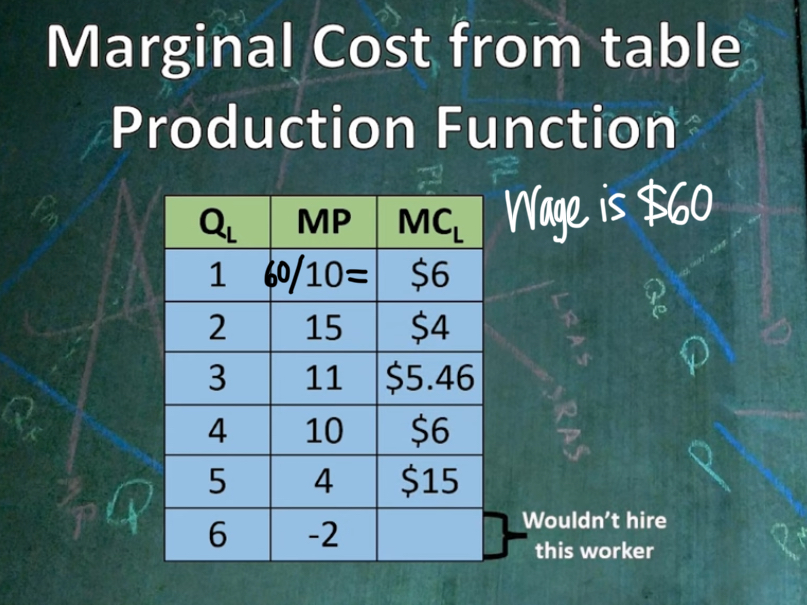ap micro
1/234
There's no tags or description
Looks like no tags are added yet.
Name | Mastery | Learn | Test | Matching | Spaced |
|---|
No study sessions yet.
235 Terms
Scarcity
Unlimited wants, limited resources
Land
Scarce resource: Natural resources
Labor
Scarce resource: physical labor, skill, amount of effort put into a task by paid workers
Capital
scarce resource: Monetary value- divided into physical and human
Physical capital
Tools/goods used to produce other good/service
Human capital
Education and training an individual has that is used in the production of a good/service
entrepreneurship
scarce resource: ability to create a business
fixed resources
resources that remain constant regardless of the level of production or activity
opportunity cost
things u give up in order to buy a good/service
if there’s an opportunity cost, the good is scarce
how do u know if an item is scarce?
if theres not enough of it for everyone who wants it
trade- off
things u lose in order to use a scarce resource
scarcity vs shortage
scarcity: less available than ppl want
shortage: quantity supplied is less than quantity demanded at the current price
how do we decide who are the consumers?
command- someone in charge decides
and prices
traditional economy
“what, how, and whom to produce for” are all determined by cultural traditions
market economy
“what, how, and whom to produce for” are all determined by individuals and prices (private businesses/capitalism)
command economy
“what, how, and whom to produce for” are all determined by the gov (communism)
what kind of economy does the U.S. have?
a mixed economy of all three
production possibilities curve (PPC)
a graph that shows all combinations of 2 goods that can be produced with fixed resources
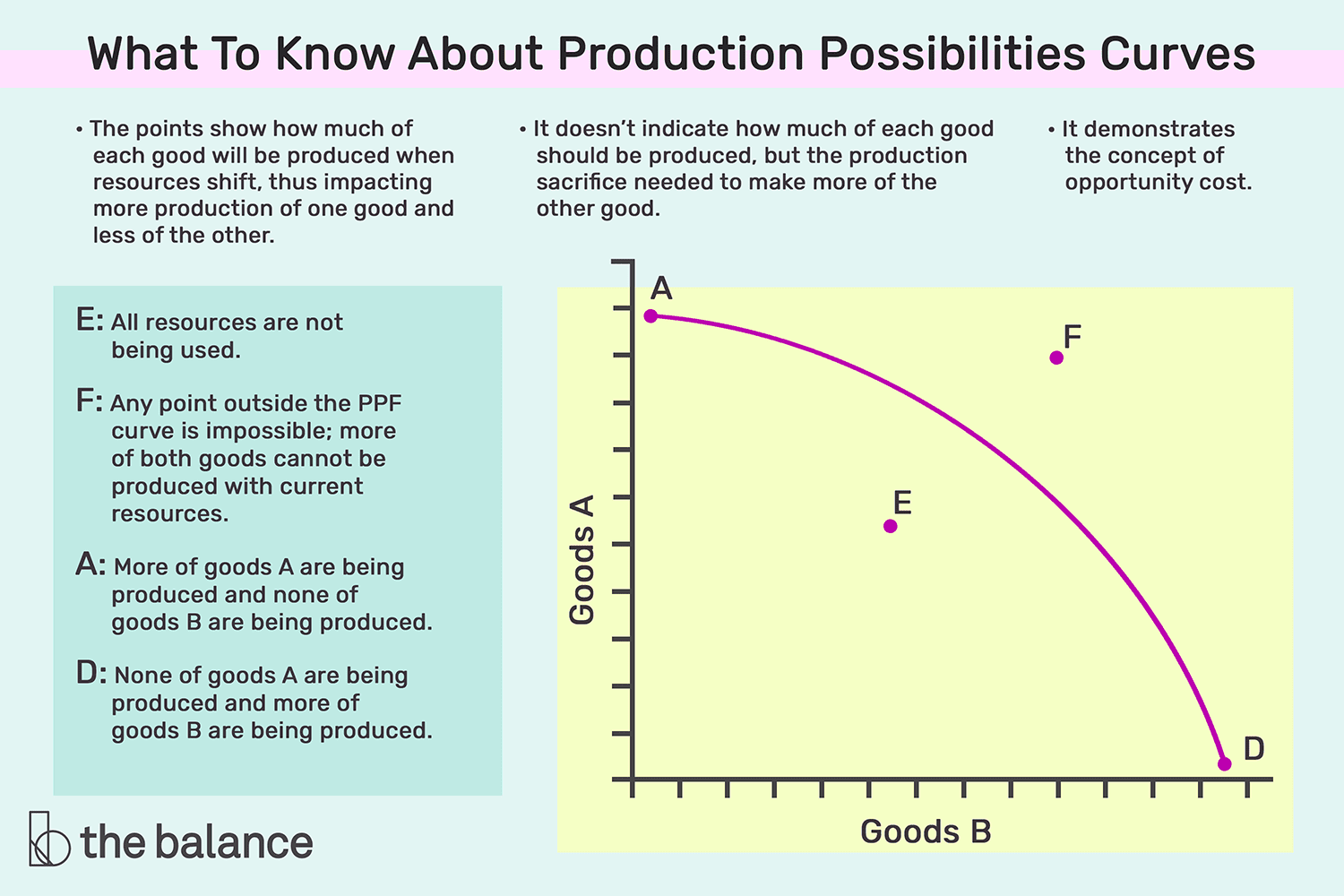
productive efficiency on PPC
the points r on the curve, meaning it’s an efficient use of resources
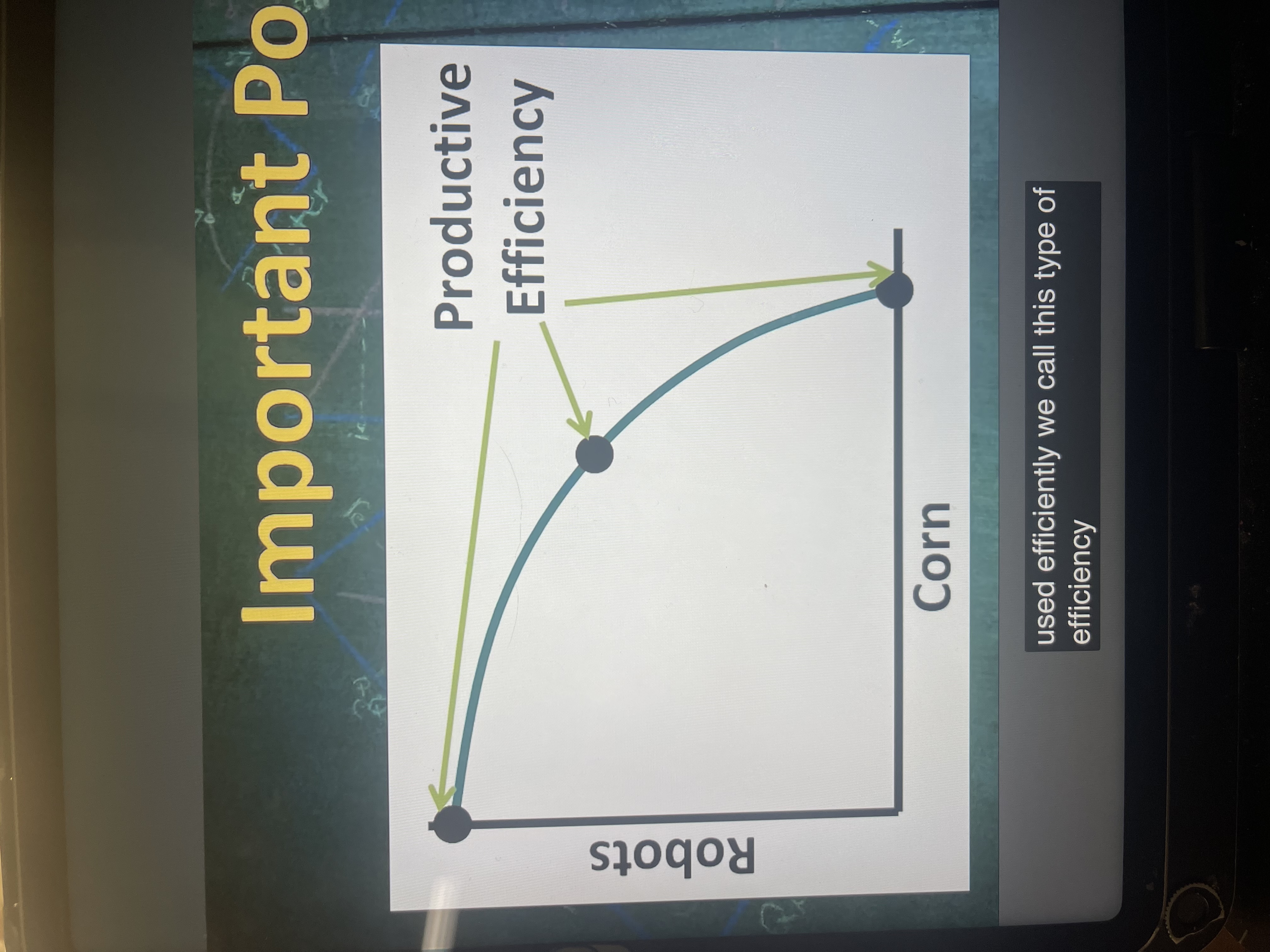
inefficient use on PPC
points on the inside of the curve, meaning some resources are not being used to its full potential
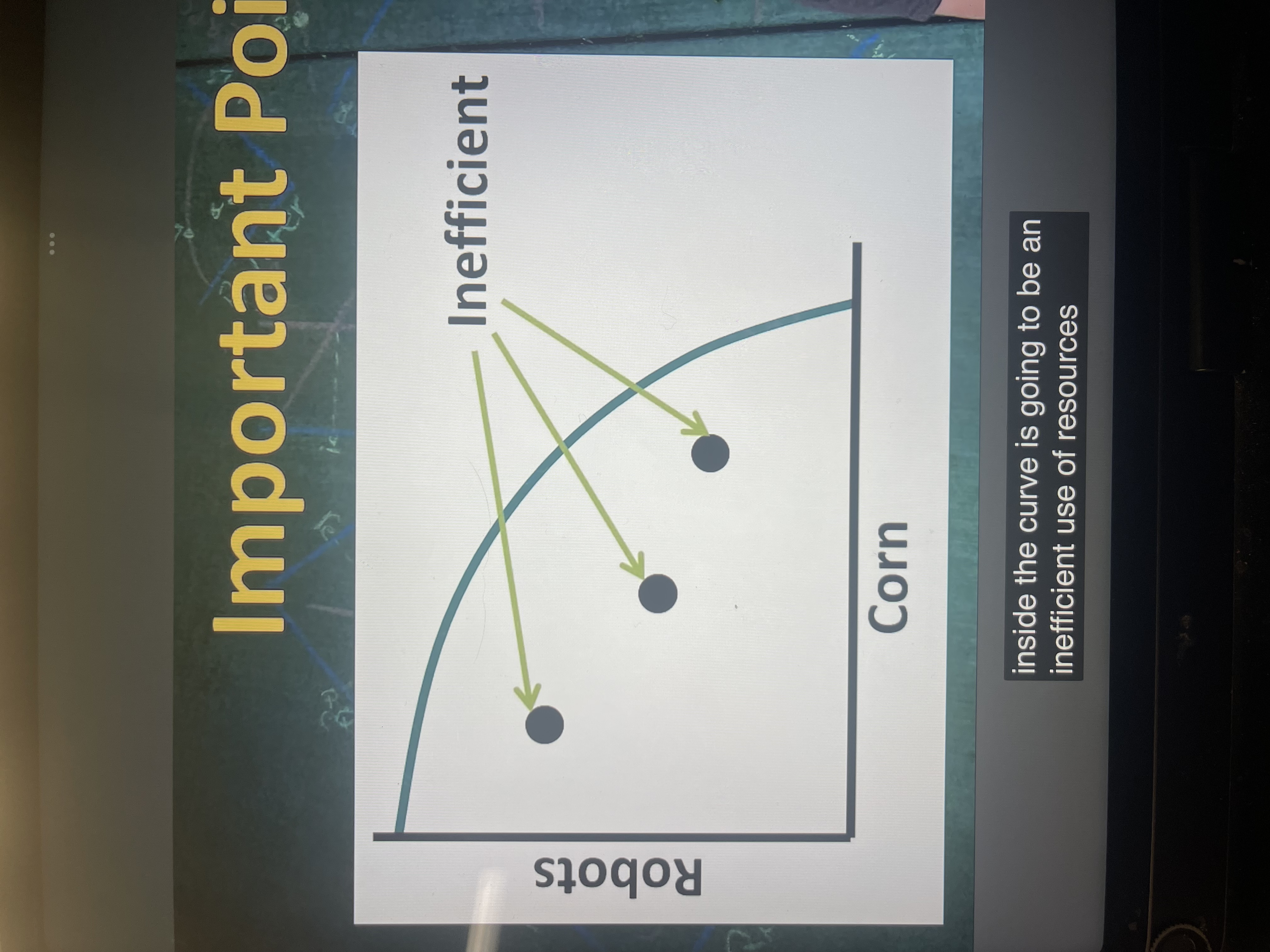
impossible points on PPC
points outside of the curve, meaning they’re beyond this economy’s possible production
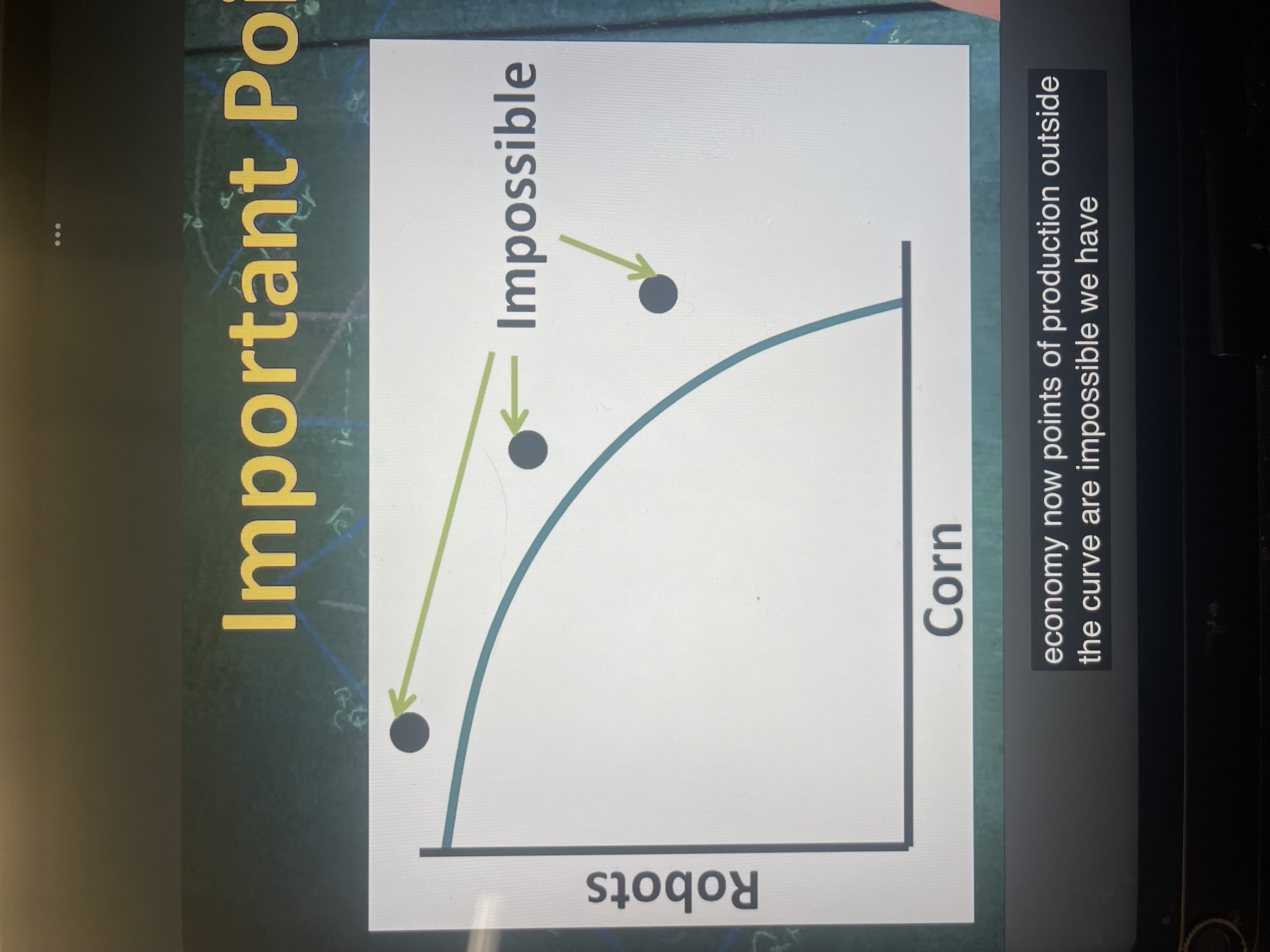
a shift inward of a PPC means..
a decrease in the quality or quantity of resources
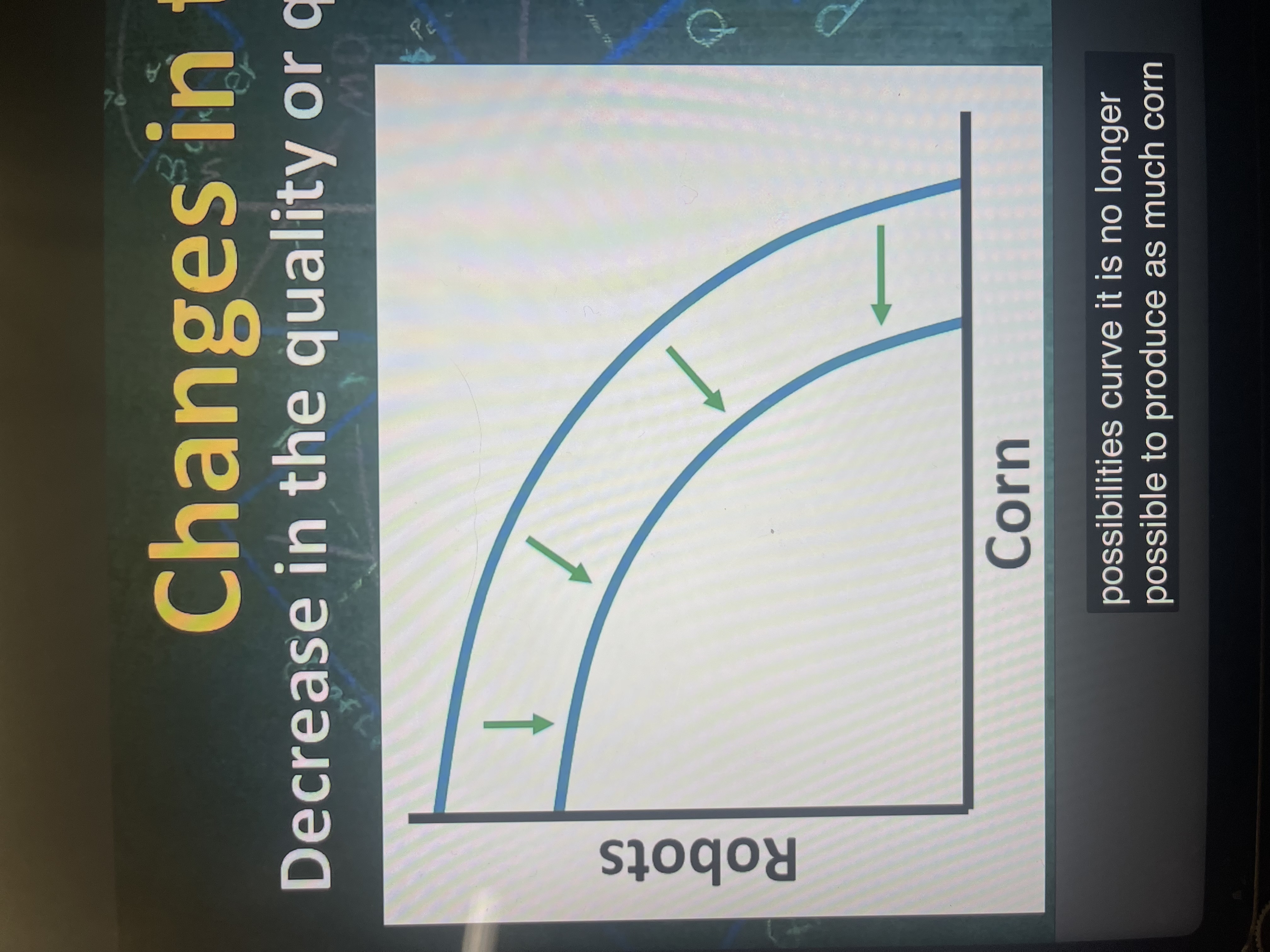
a shift outward of a PPC means..
increase in the quality or quantity of resources
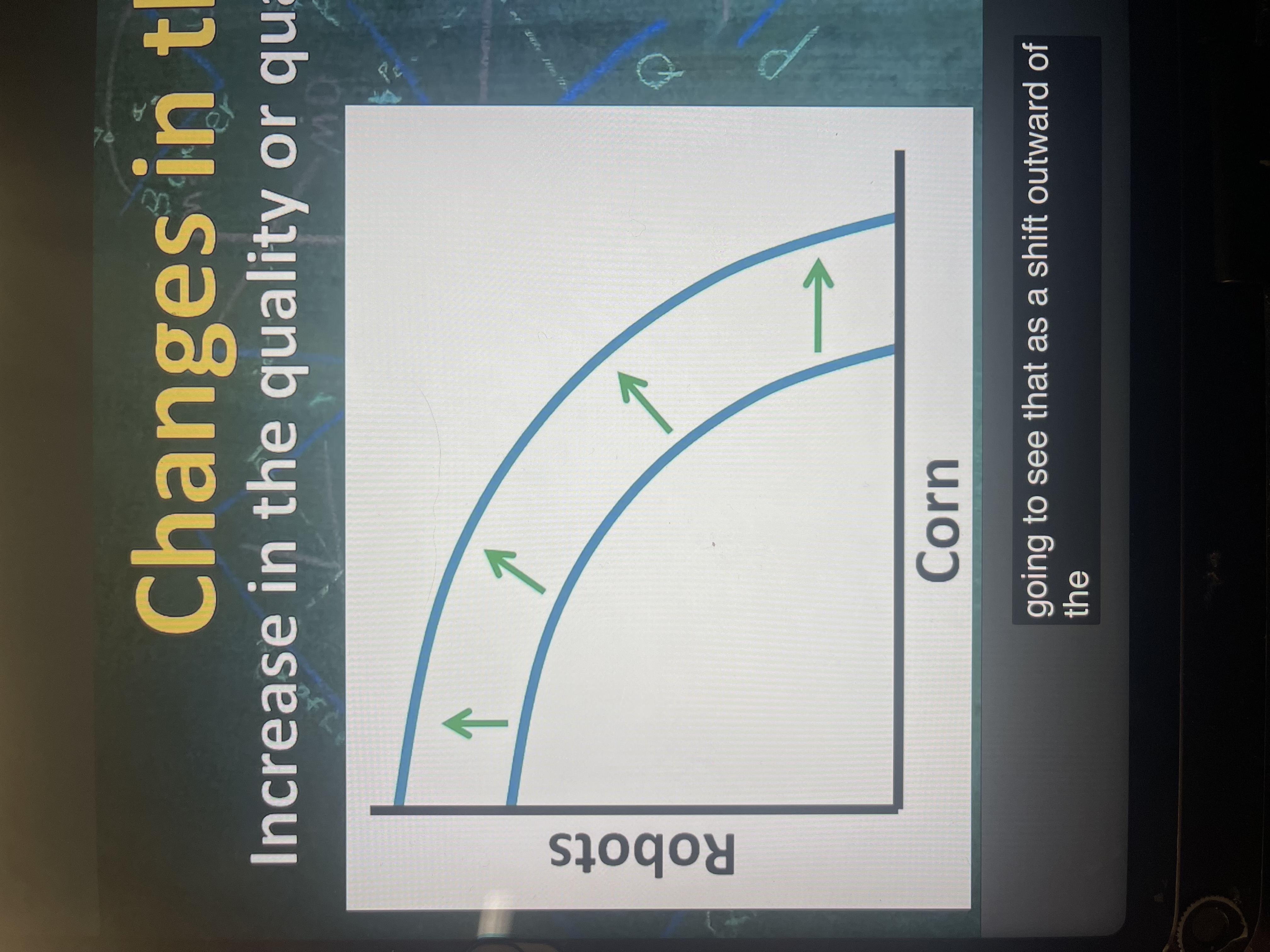
absolute advantage
ability to produce more goods with fixed resources or the same amount of goods with fewer resources AKA who is better at producing a particular good
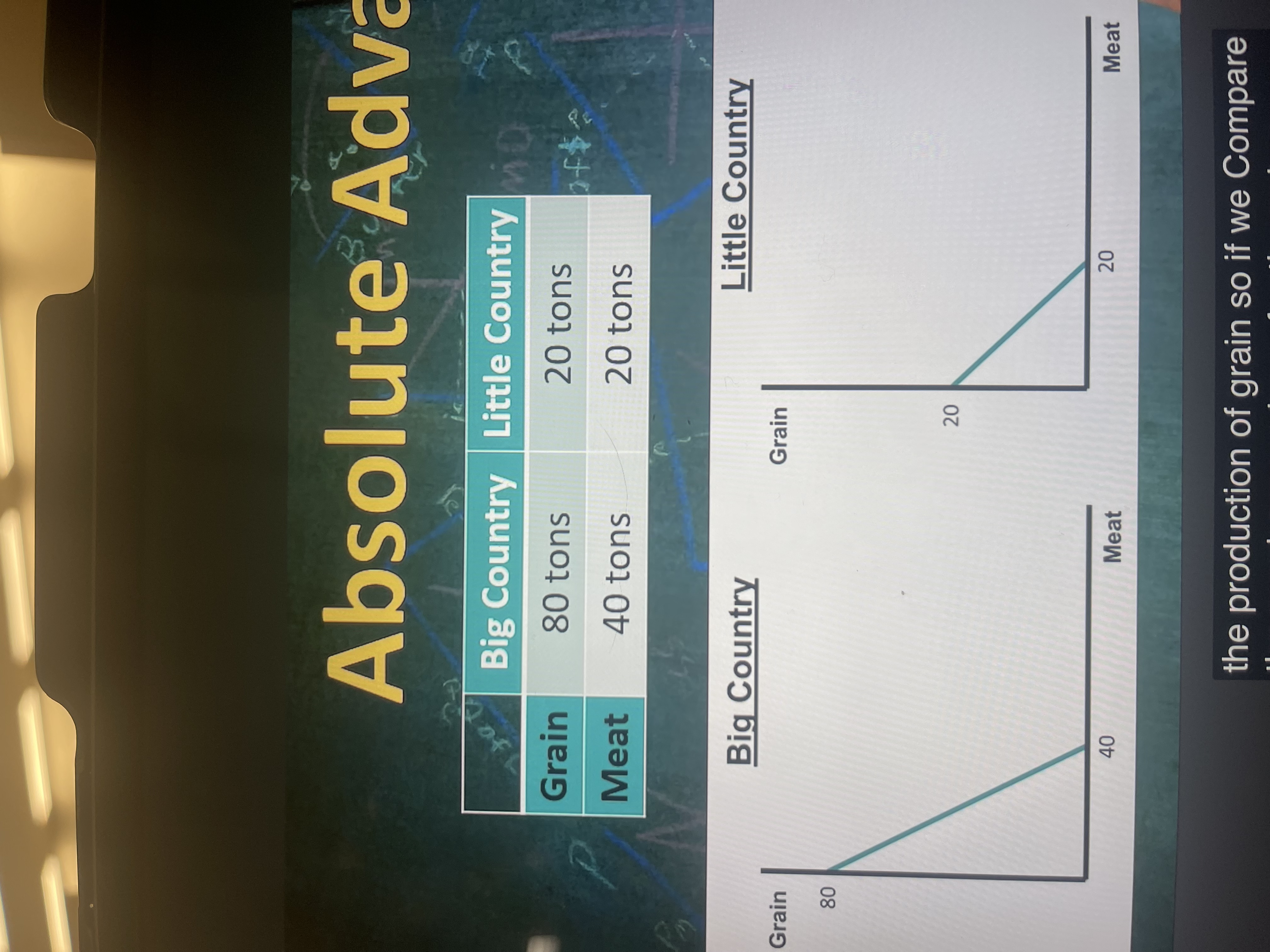
which country has the absolute advantage of grain here?
the big country does (80 vs 20 tons)
comparative advantage
ability to produce something at a lower opportunity cost
what is an output problem in comparative advantage?
when the numbers/variables we’re given are finished products aka outputs. the formula for output problems is good A= good B/good A
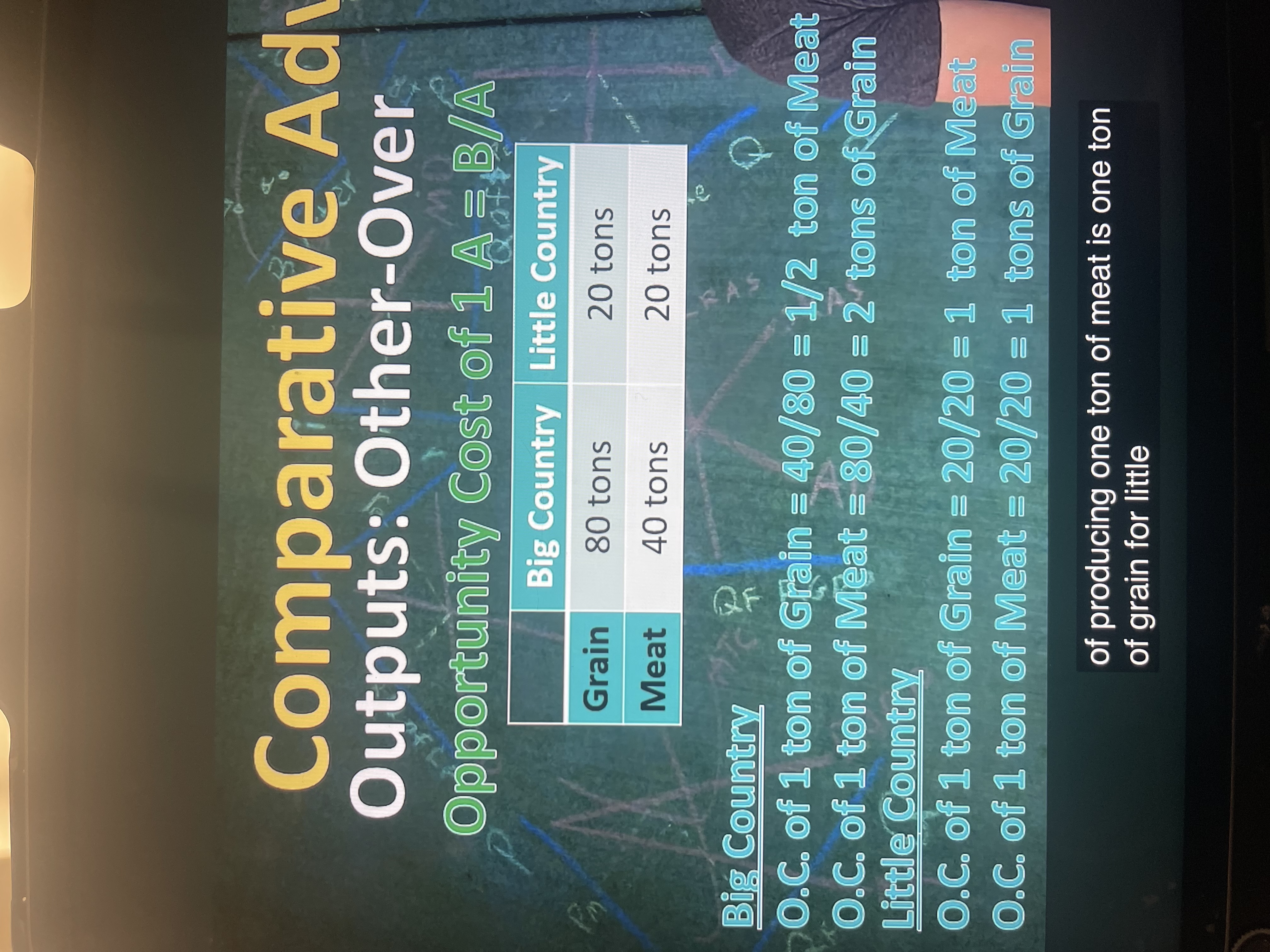
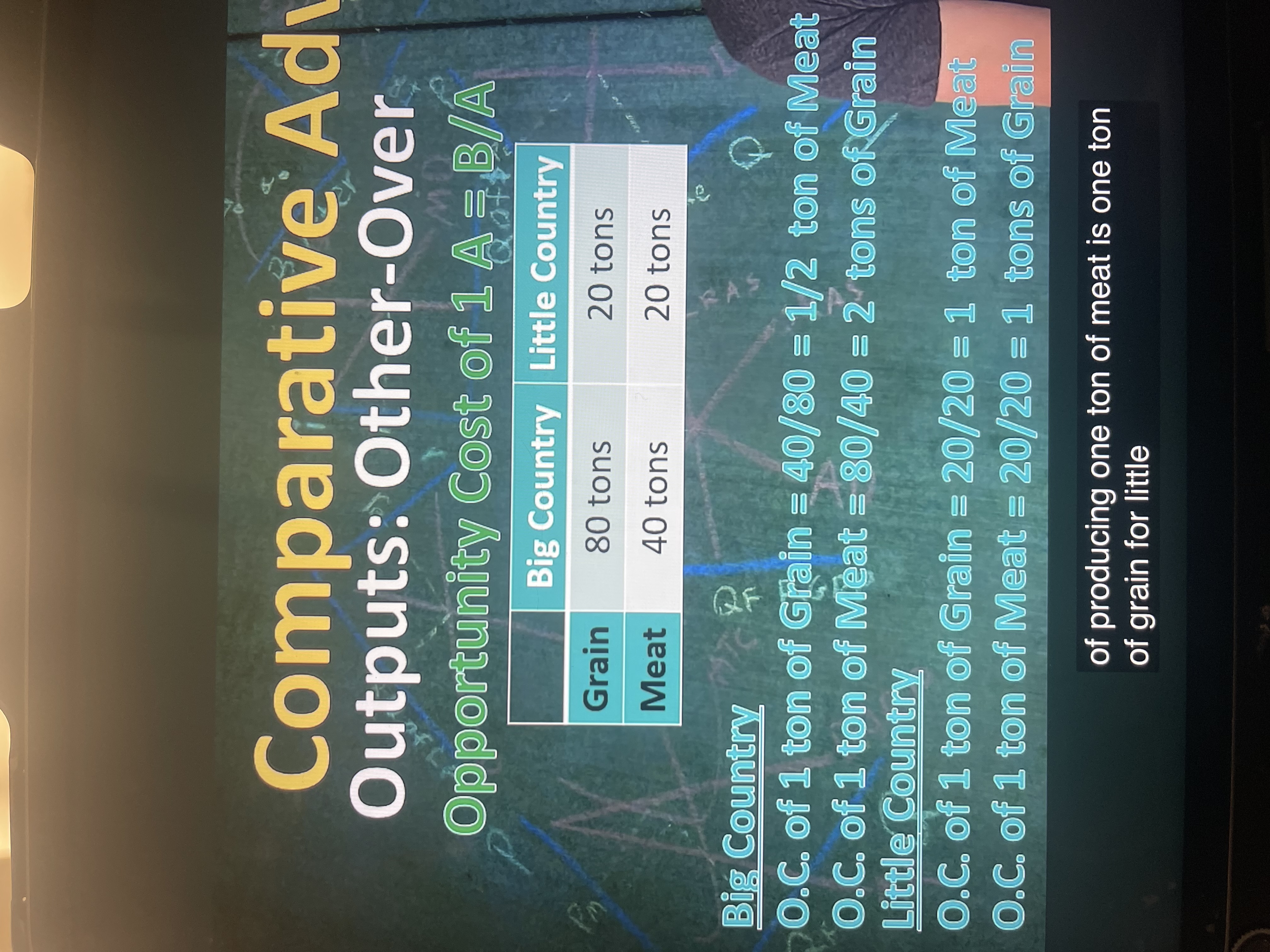
which country has the comparative advantage in grain?
big country does bc its opportunity cost is ½ ton of meat, while little country’s is 1 ton of meat. big country loses less bc it has a smaller opportunity cost
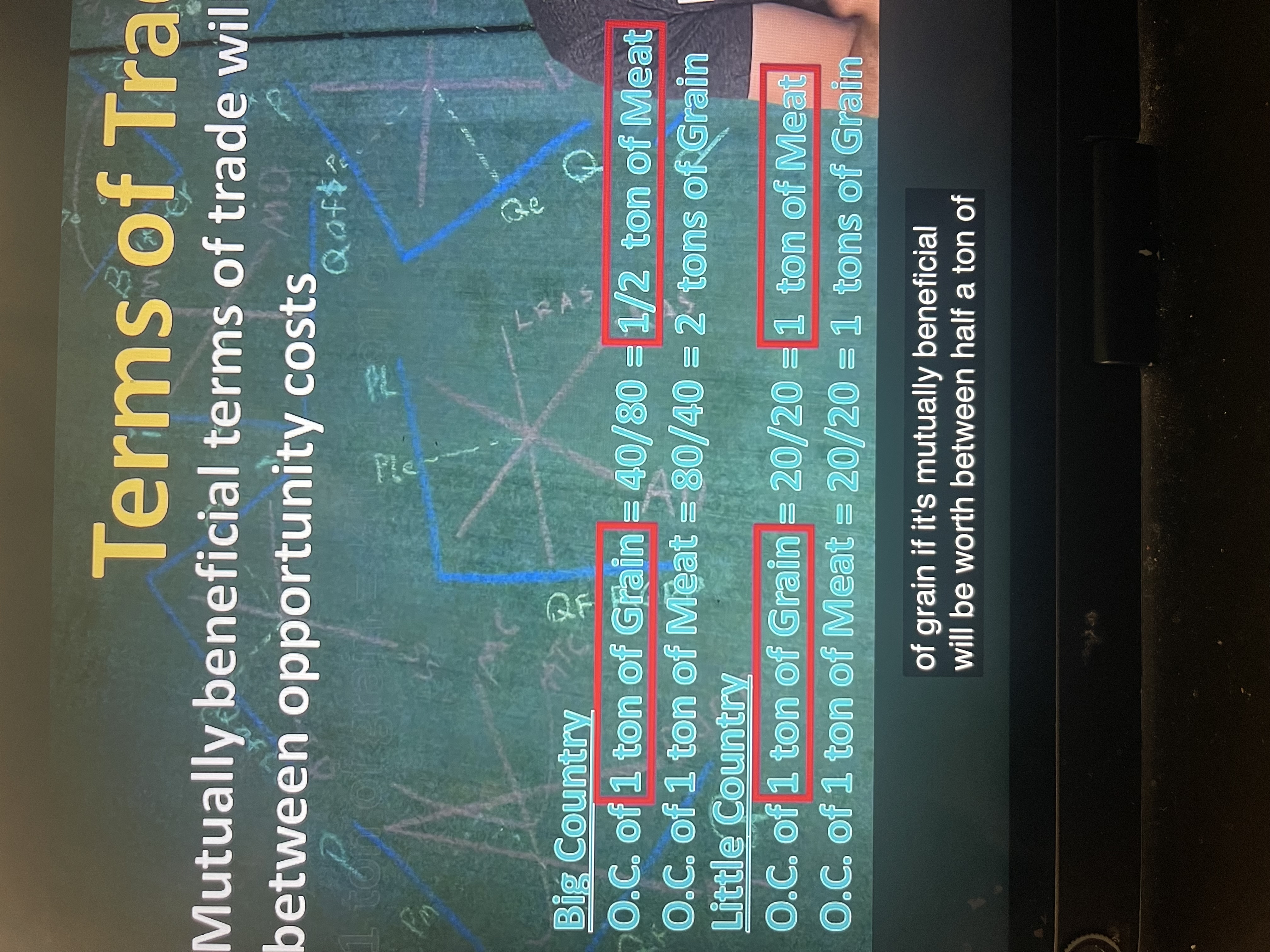
what would a mutually beneficial trade be for these two countries?
in between ½ -1 ton of meat in exchange for in between 1-2 tons of grain. it’s mutually beneficial if the trade is between the 2 countries’ opportunity costs
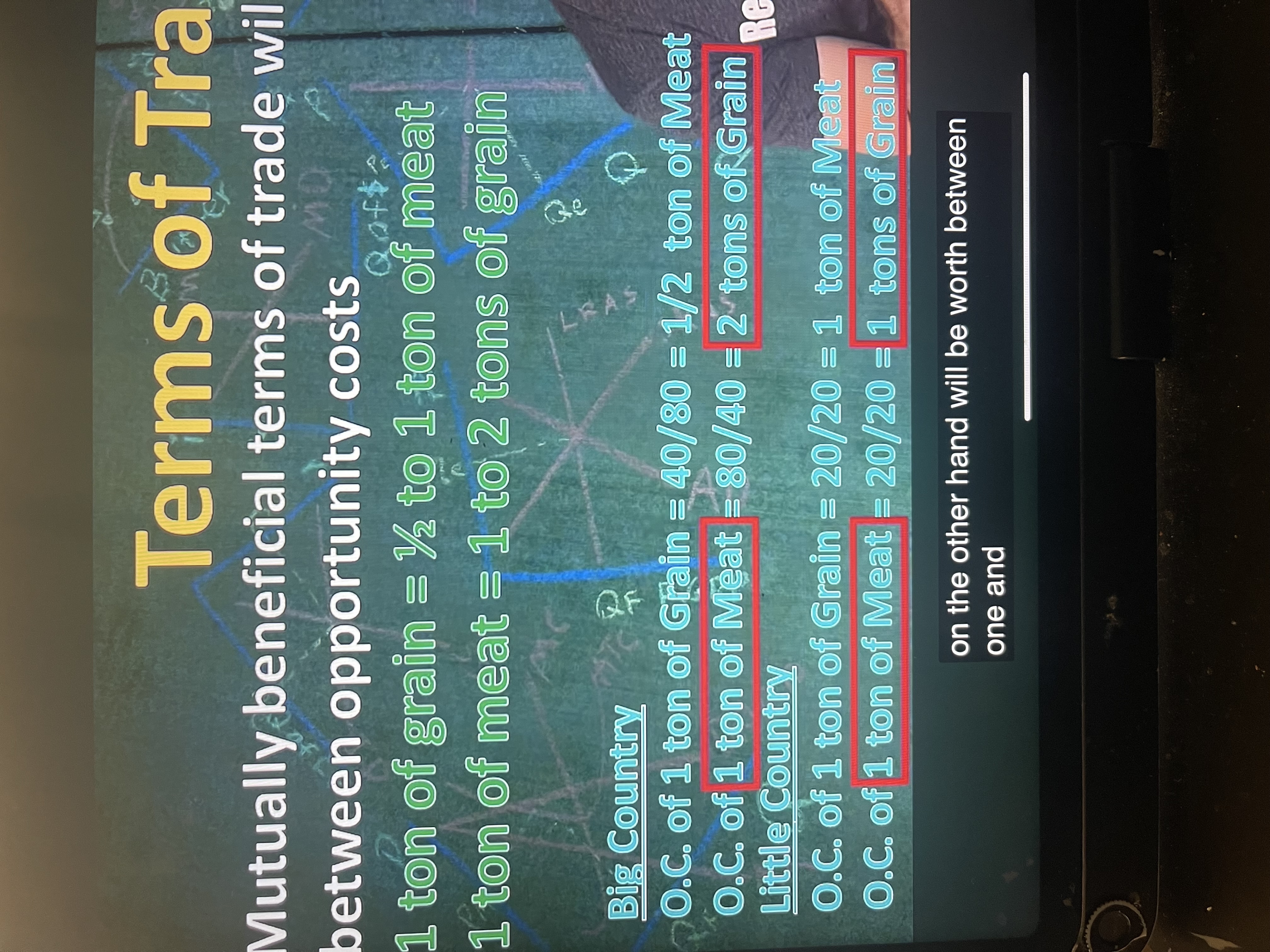
what is an input problem in comparative advantage?
when the variables are inputs of things that go into the production of a good/service (like time) the formula for the opportunity cost is good A = good A/ good B
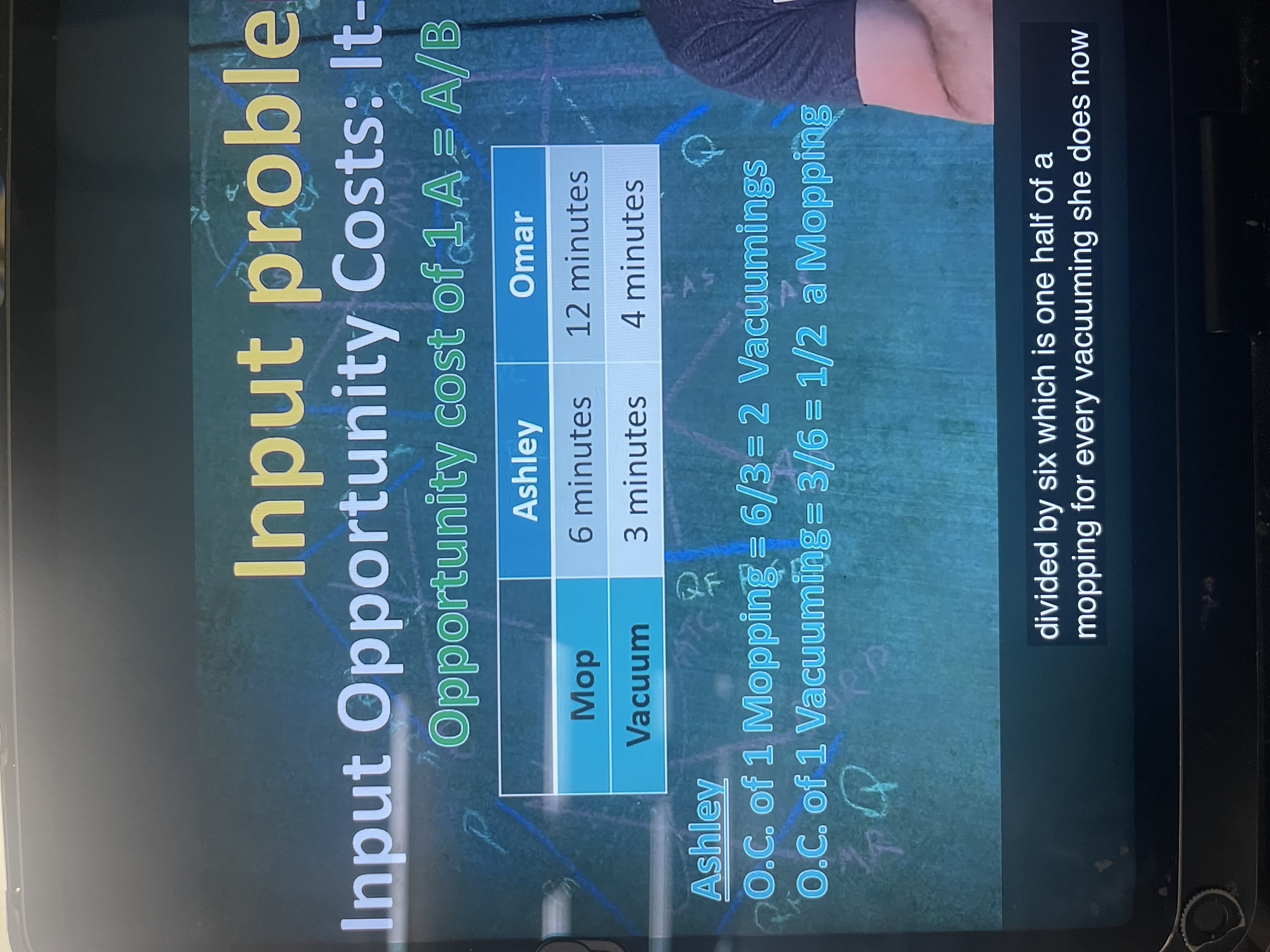
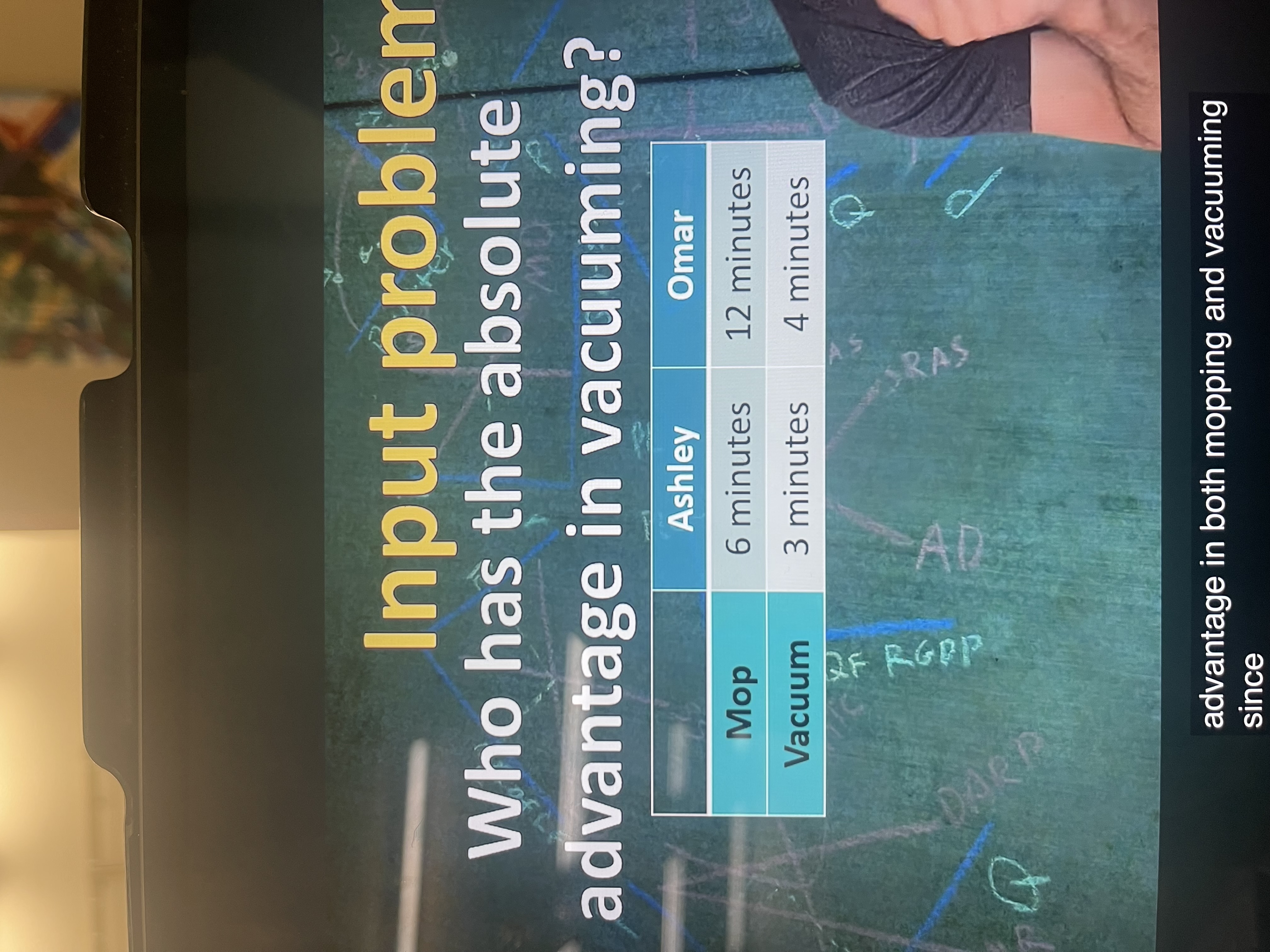
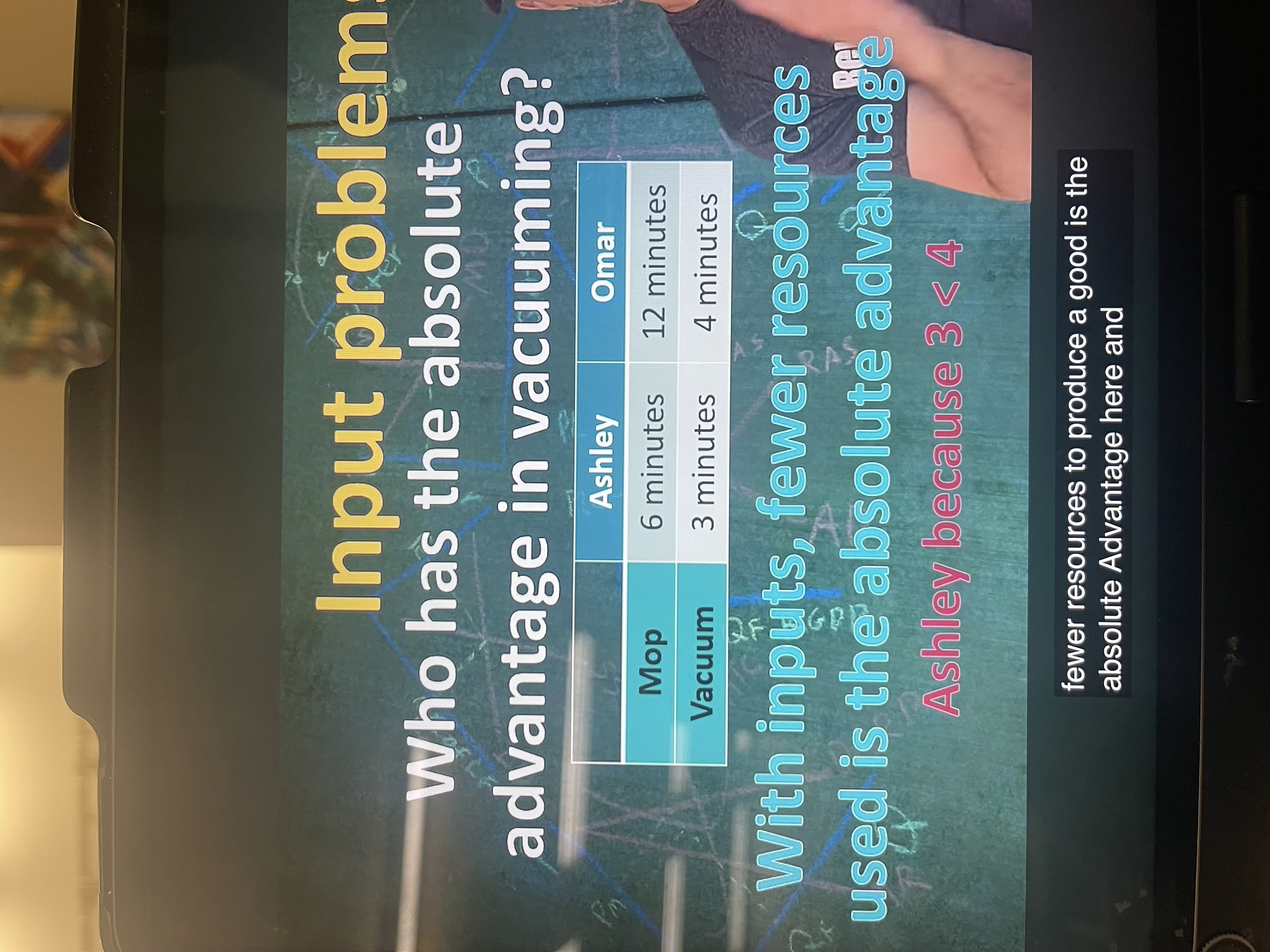
Opportunity cost
The value of the alternative you didn’t choose (split into explicit and implicit costs)
Explicit costs
Money paid for a choice
Implicit costs
Value of the opportunities lost when u made a choice
How do you calculate an opportunity cost?
You add the explicit and implicit costs together
Total cost
Basically opportunity cost
Total benefit
Enhancement to wellbeing
Total net benefit
Total benefit - total cost = total net benefit
If the net benefit is positive, it means the benefits outweighed the costs. If it’s negative, the costs outweighed the benefits.
Marginal
Change in the total
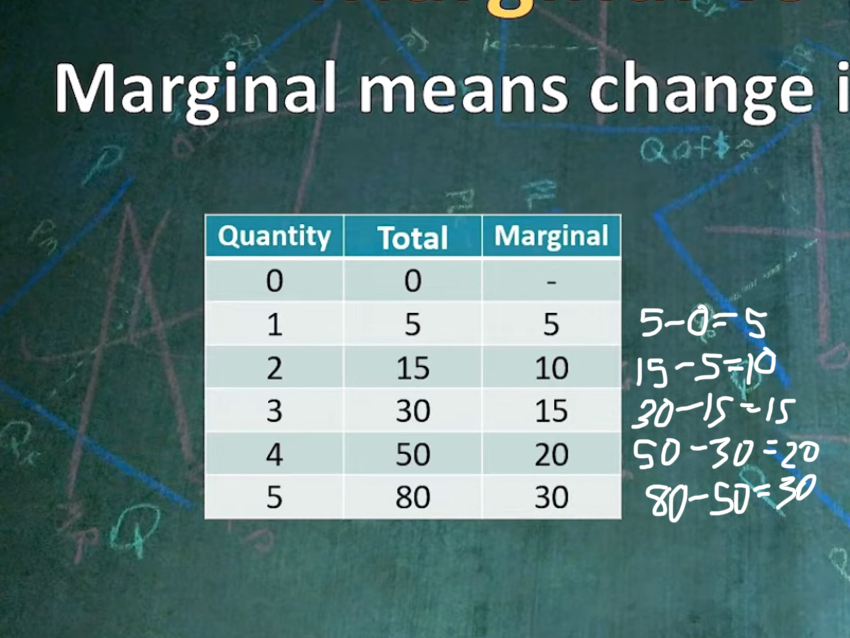
Formula for benefit maximization (finding best choice)
MB=MC (the choice is good if the marginal benefit is greater than or equal to the marginal cost)
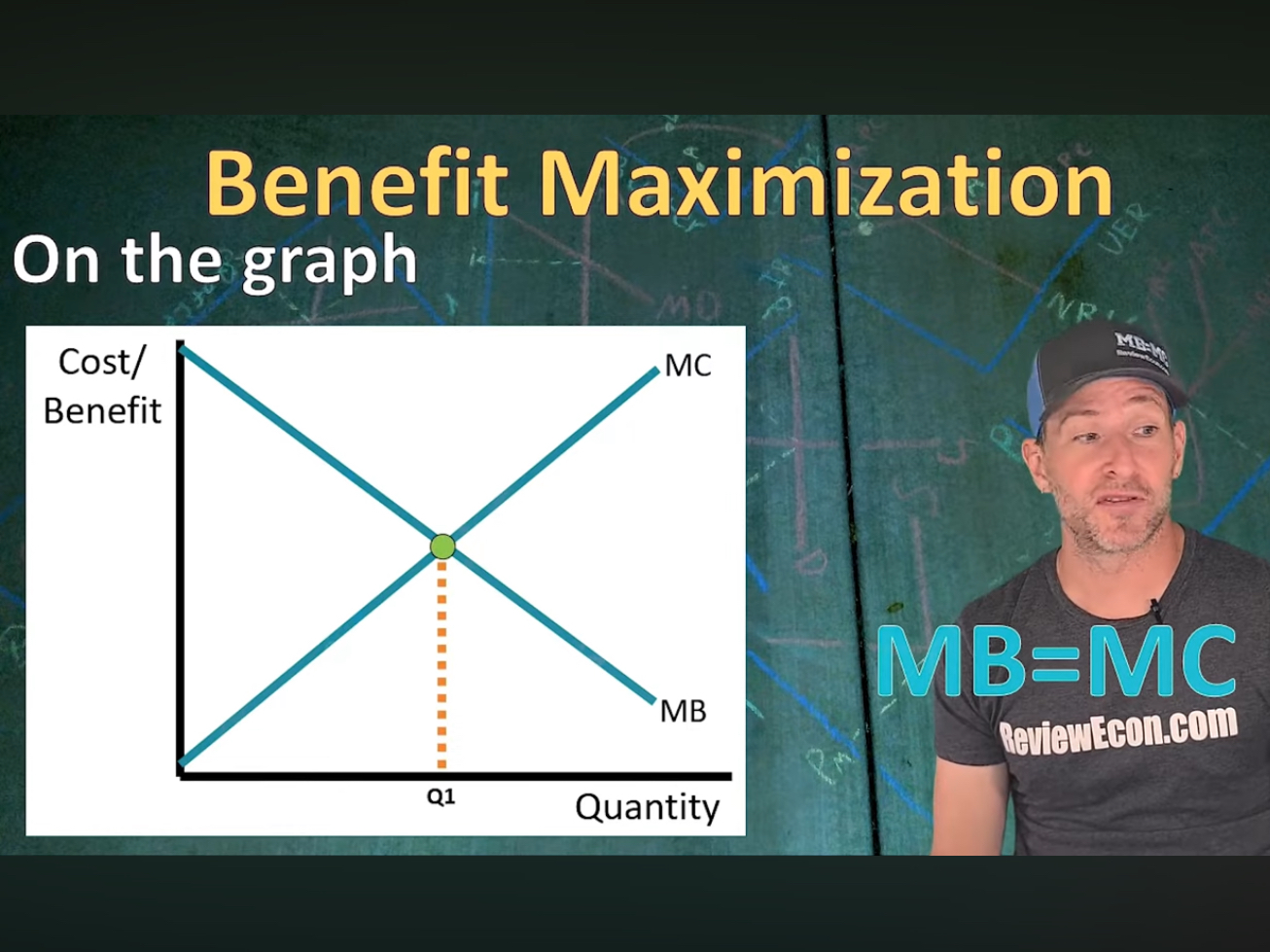
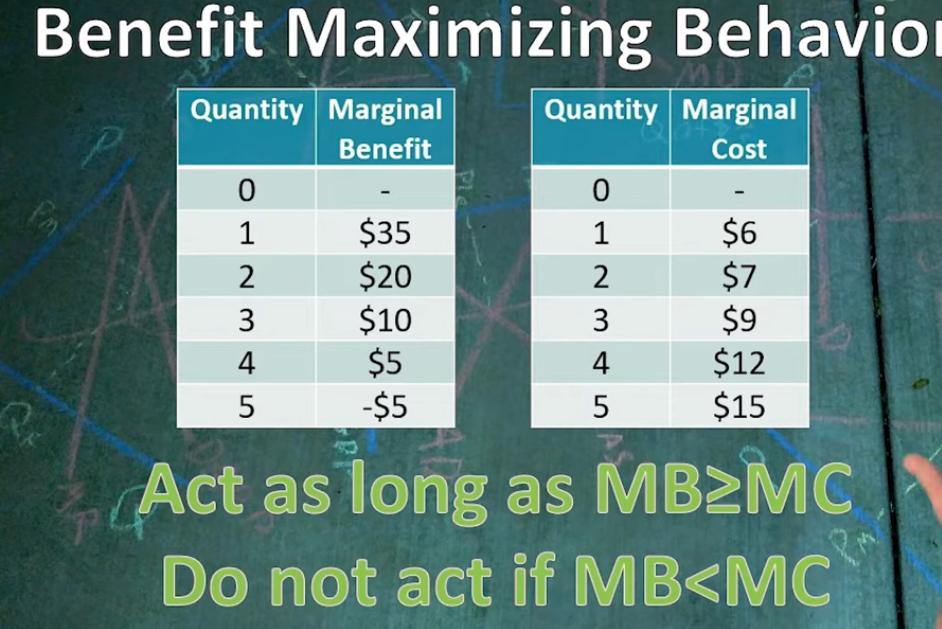
What is the best quantity to buy here?
3 because that’s the last quantity where the marginal benefit is greater than the marginal cost
Utility
Satisfaction gained by consumers when consuming the good/service
Law of diminishing marginal utility
The marginal utility decreases as the quantity of the good increases
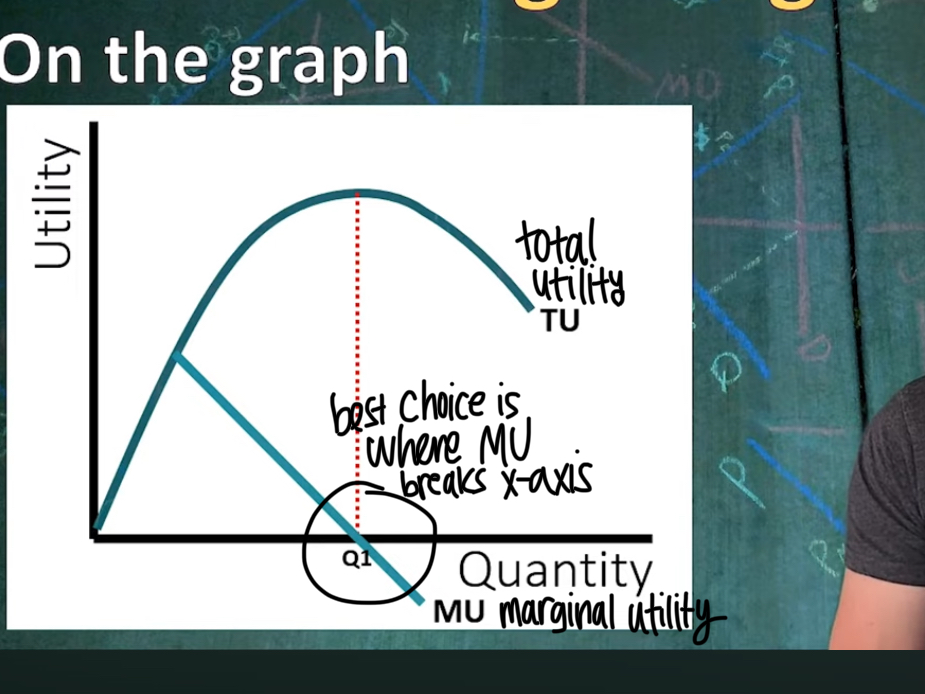
What’s the formula for utility maximization
Marginal utility of product A/price of product A = Marginal utility of product B/price of product B
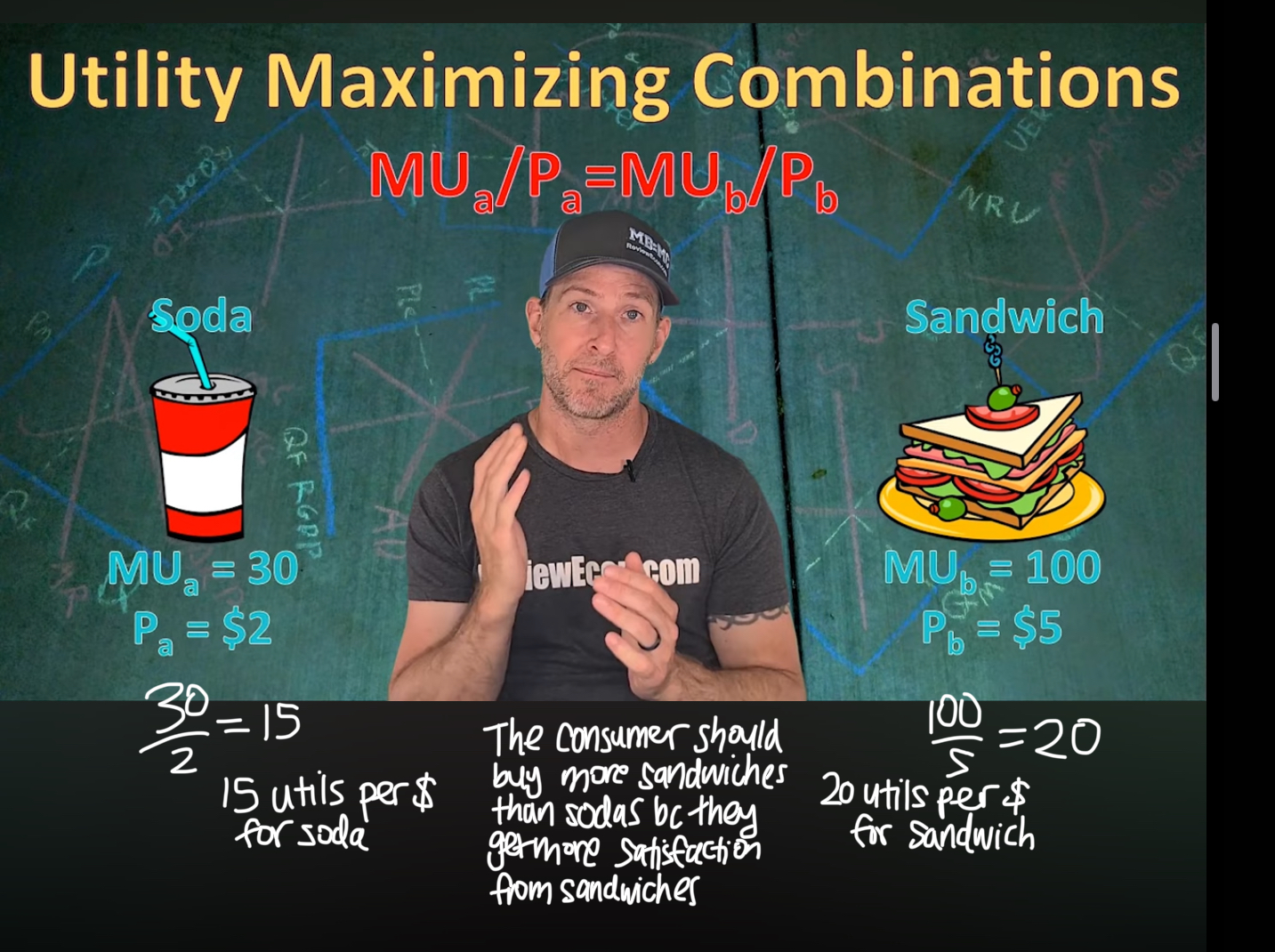
Law of demand
Consumers buy more at low prices and buy less at high prices
Substitution effect
An increase in price makes substitutes of the product more attractive, and vice versa
Income effect
An increase in price will decrease a consumer’s power to purchase things in their income
How do you create a market demand table?
By adding up the individual demands of what consumers would pay for the product
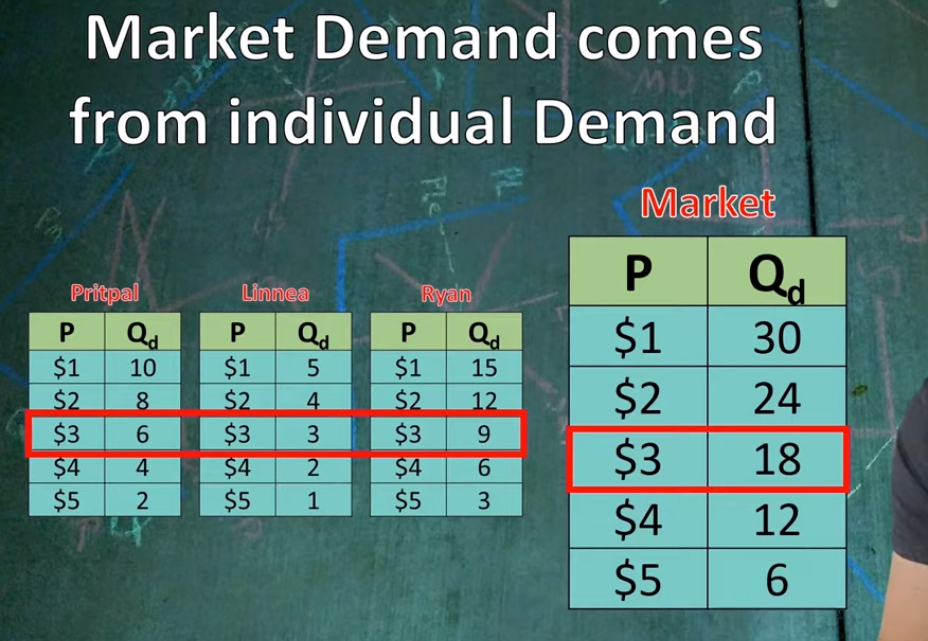
Demand vs quantity demanded
Demand is the entire demand curve for that product, while quantity demanded is just specific to one price of the product. Price changes quantity demanded and not the whole demand (same goes for supply vs quantity supplied)
What does it mean when the demand curve shifts to the right?
The demand increased
What does it mean when the demand curve shifts to the left?
The demand decreased
Which factors shift demand?
Tastes and preferences
market size (# of buyers)
price of related goods (substitutes or complements)
changes in income (normal goods or inferior goods)
expectations for the future (like expecting the price to increase in the future)
Substitute goods
Products that can replace each other
Complement goods
Goods that are paired together. If one product becomes more expensive, the complement’s demand curve will shift to the left
Normal goods
If the consumer income increases, they will buy more normal goods (luxury goods like cars)
Inferior goods
When a consumer’s income increases, they actually buy less of inferior goods (like canned soup or instant ramen)
Law of supply
Producers sell more at high prices and less at low prices
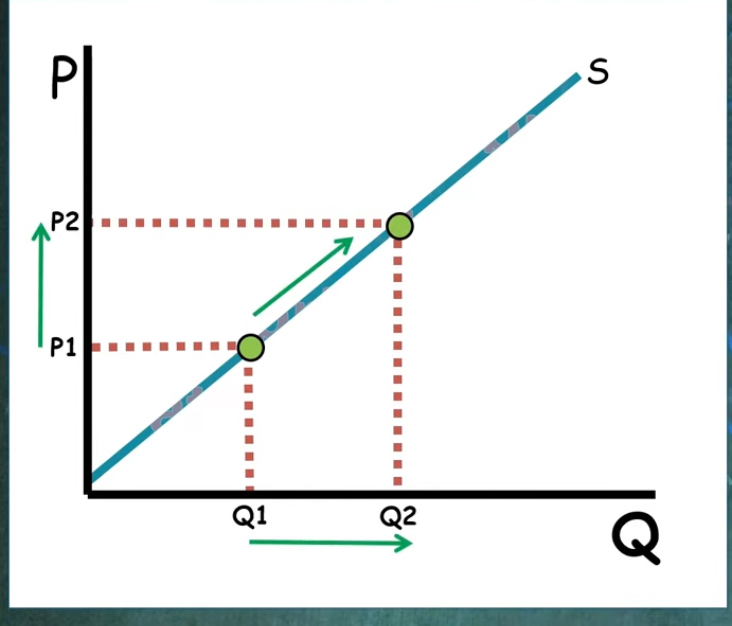
Which factors shift supply?
Input prices- cost of resources for production of the product
Government tools (taxes, subsidies, regulations)
Number of sellers/competition
Technology (will usually increase supply)
Price of other goods (some goods become more profitable to sell)
Price elasticity
How sensitive a product is to price changes (if its quantity demanded changes easily due to price changes)
Inelastic
It’s not sensitive to price changes. Goods are inelastic if it’s a necessity and there are few substitutes
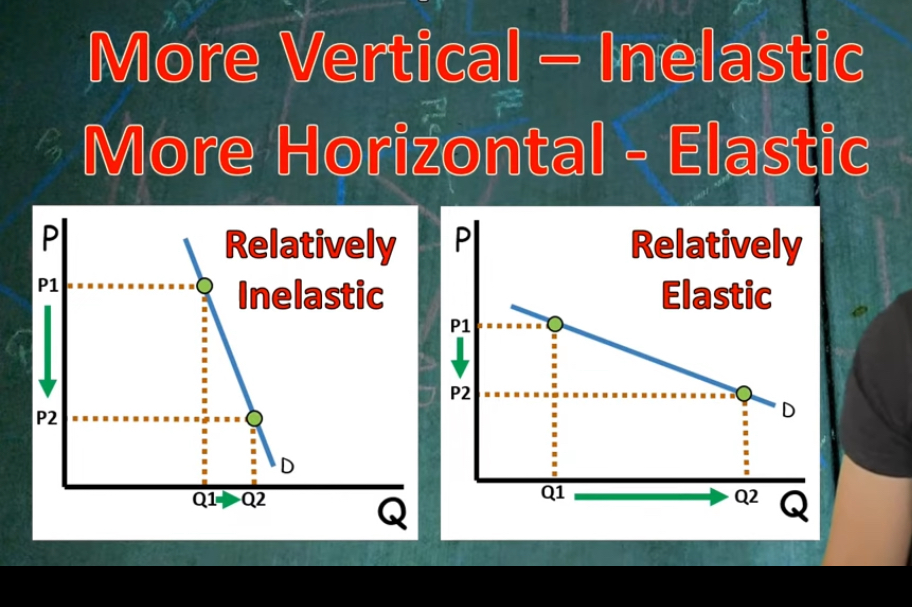
Elastic
It is sensitive to price changes. Goods are elastic if it’s a luxury item and there are lots of substitutes
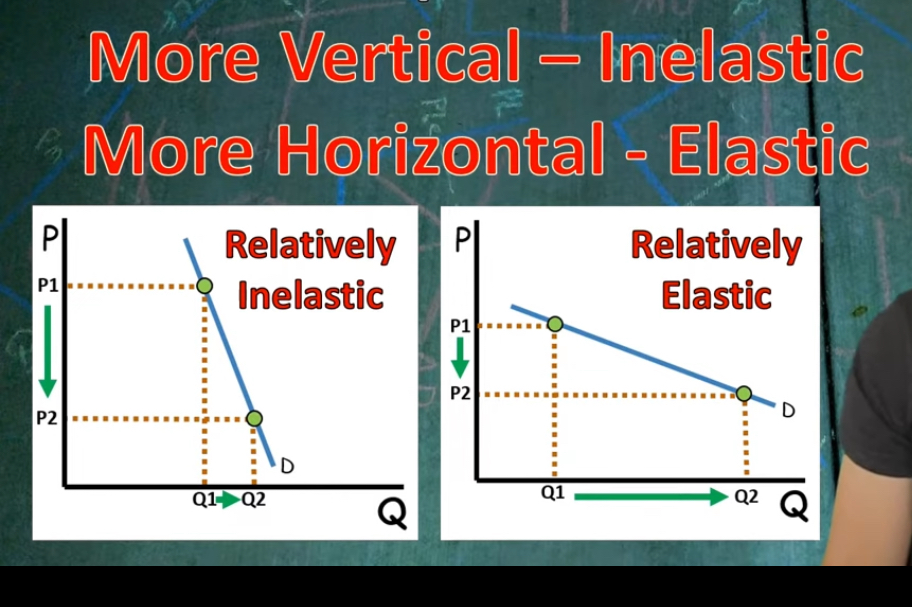
Total revenue formula
Total revenue= price X quantity sold
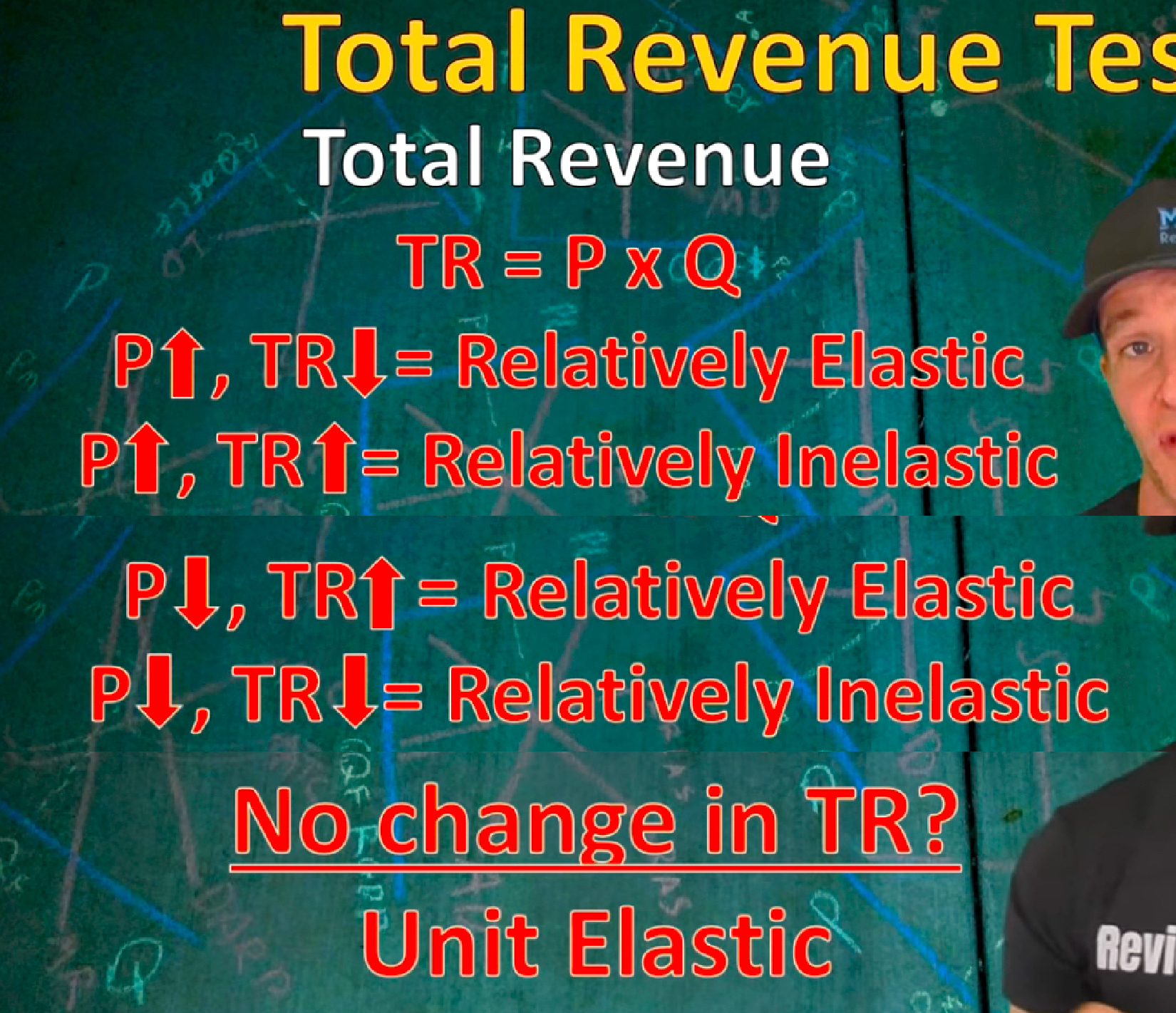
Marginal revenue test
Change in total revenue/ change in quantity sold
Positive = elastic
Zero = unit elastic
Negative = inelastic
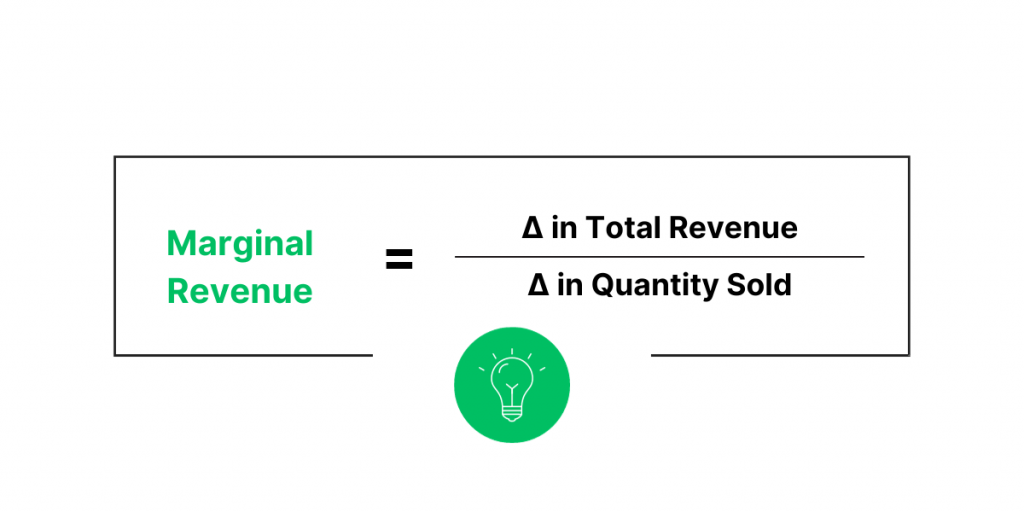
Elasticity coefficient formula
Percentage change in quantity/ percentage change in price (this formula applies to elastic for demand and supply)
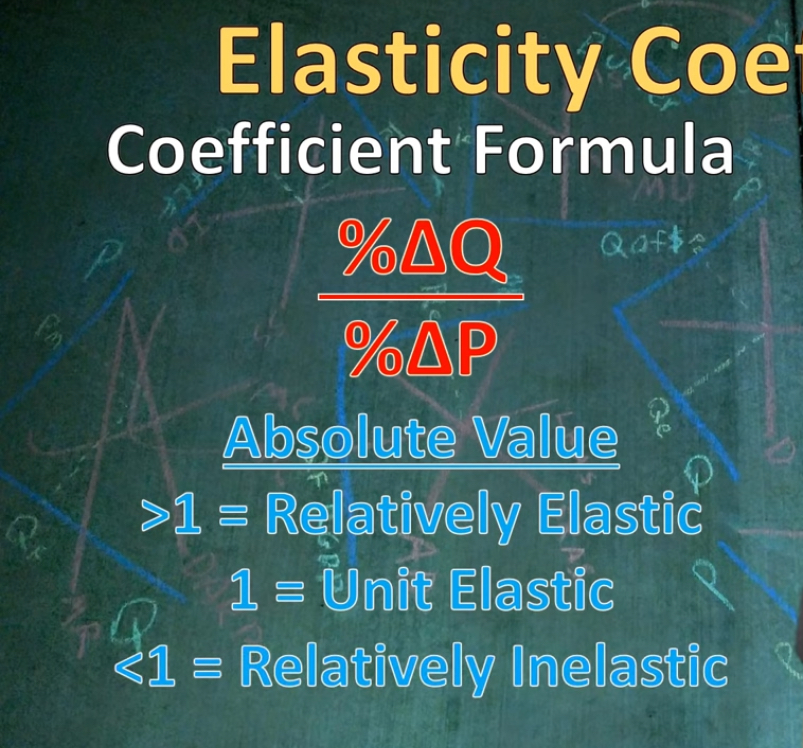
Percentage change formula
New-old/ old
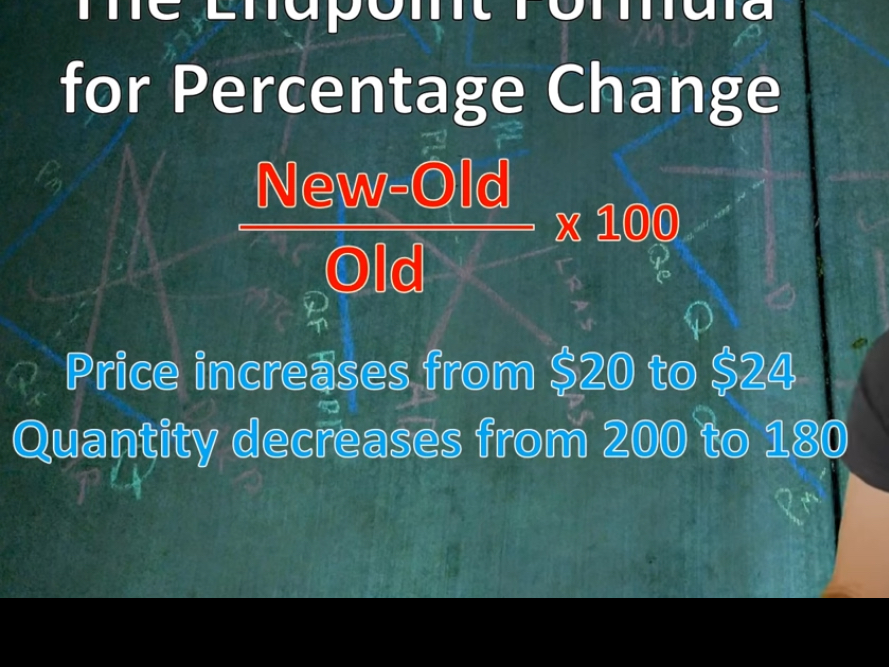
Given this info, determine the elasticity
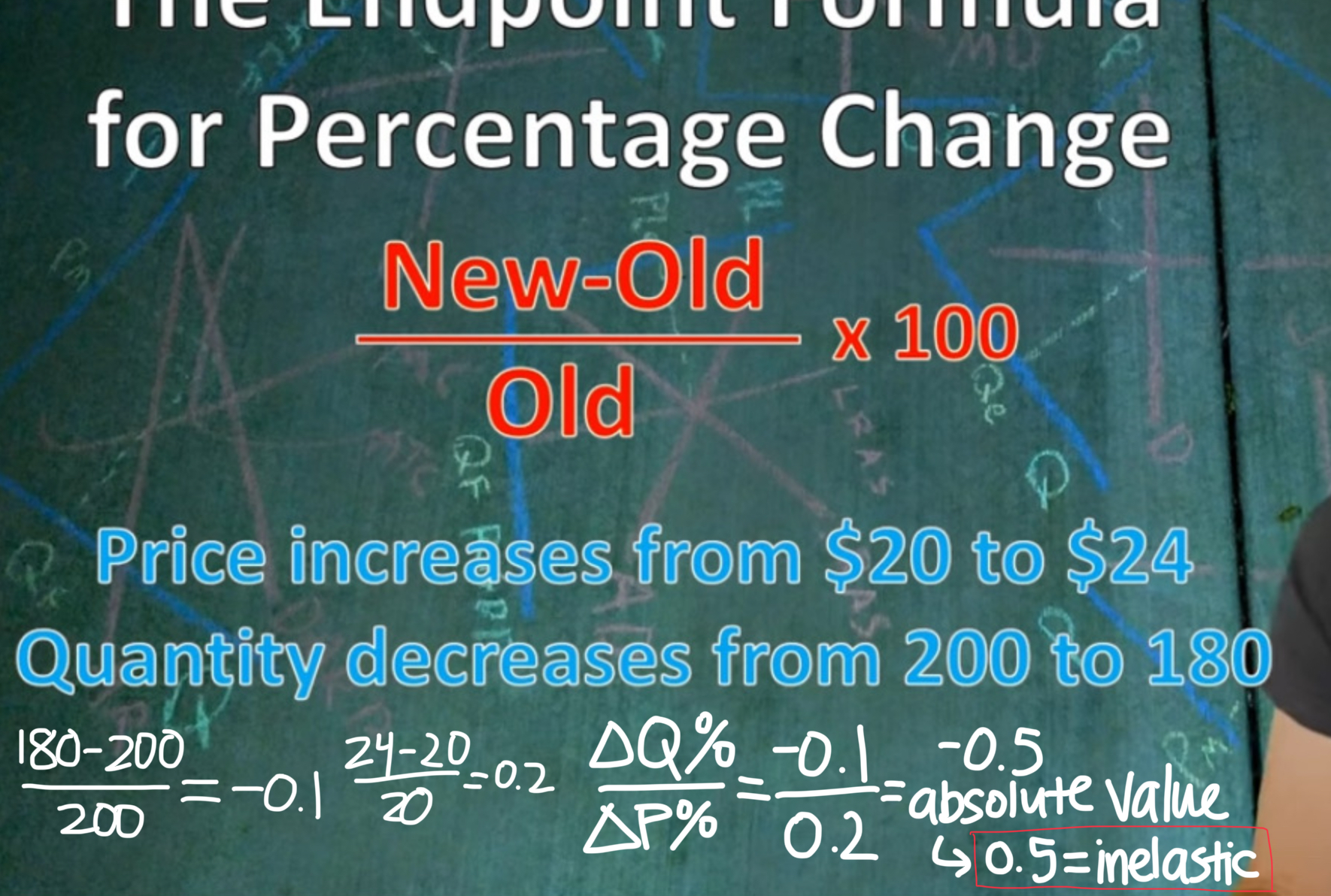
What do graphs of perfectly elastic/inelastic look like?
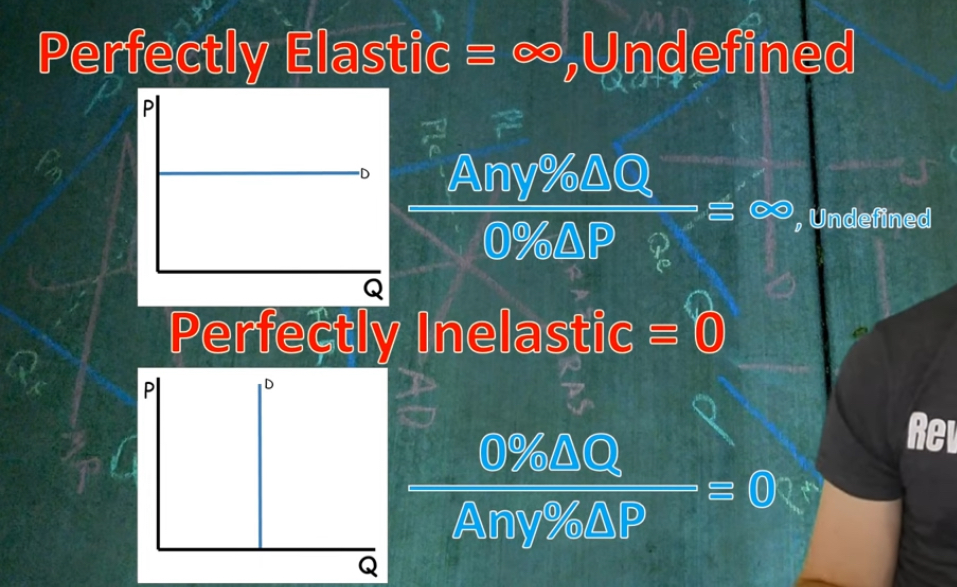
What do elasticity of supply graphs look like?
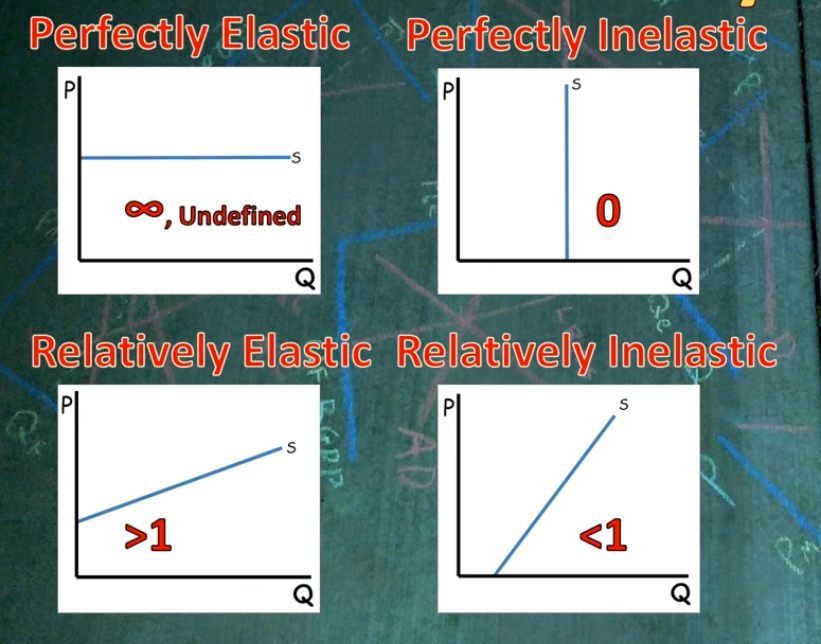
Income elasticity
How much a change in income impacts the quantity ppl buy
Income elasticity formula
Percentage change in quantity/ percentage change in income
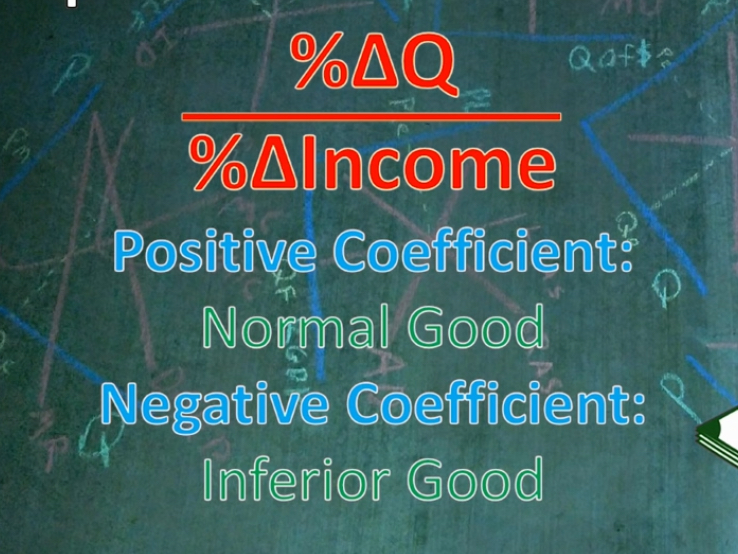
Cross price elasticity
How the price of one good impacts the demand for another good
Cross price elasticity formula
Percentage change of quantity in one good/ percentage change of price in another good
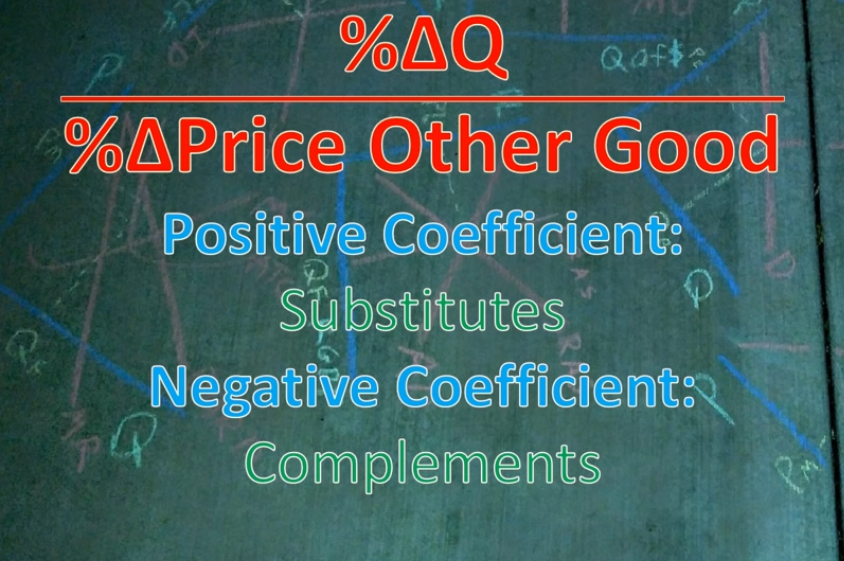
Market equilibrium
Quantity demanded = quantity supplied
Surplus
When the price is above the market equilibrium, so the quantity demanded is less than the quantity supplied
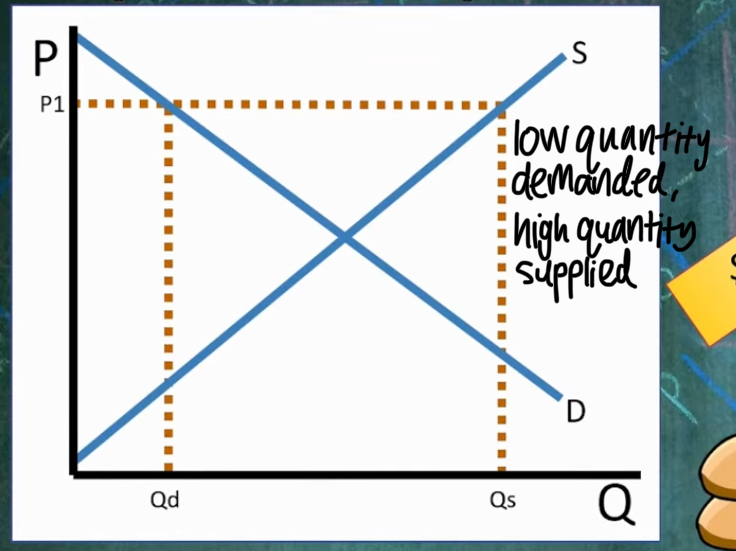
How to calculate the amount of surplus
Quantity supplied - quantity demanded
Shortage
When the price is below the market equilibrium, so the quantity demanded is more than the quantity supplied
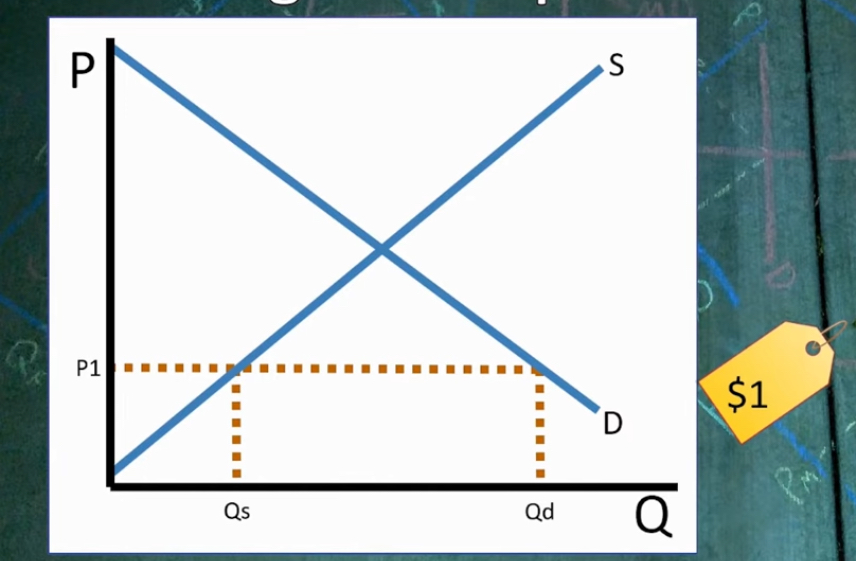
How to calculate the amount of shortage
Quantity demanded - quantity supplied
Consumer surplus
Difference between the value that the product has to the consumer and the price the consumer pays. Marginal utility - price = consumer surplus
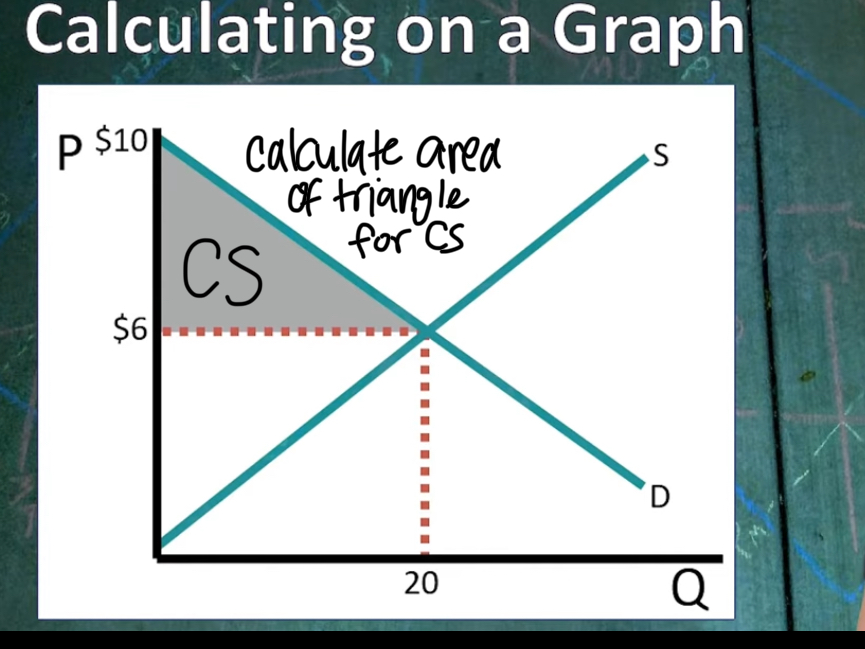
Producer surplus
Difference between the marginal cost of production and the price of product. Marginal cost-price= producer surplus
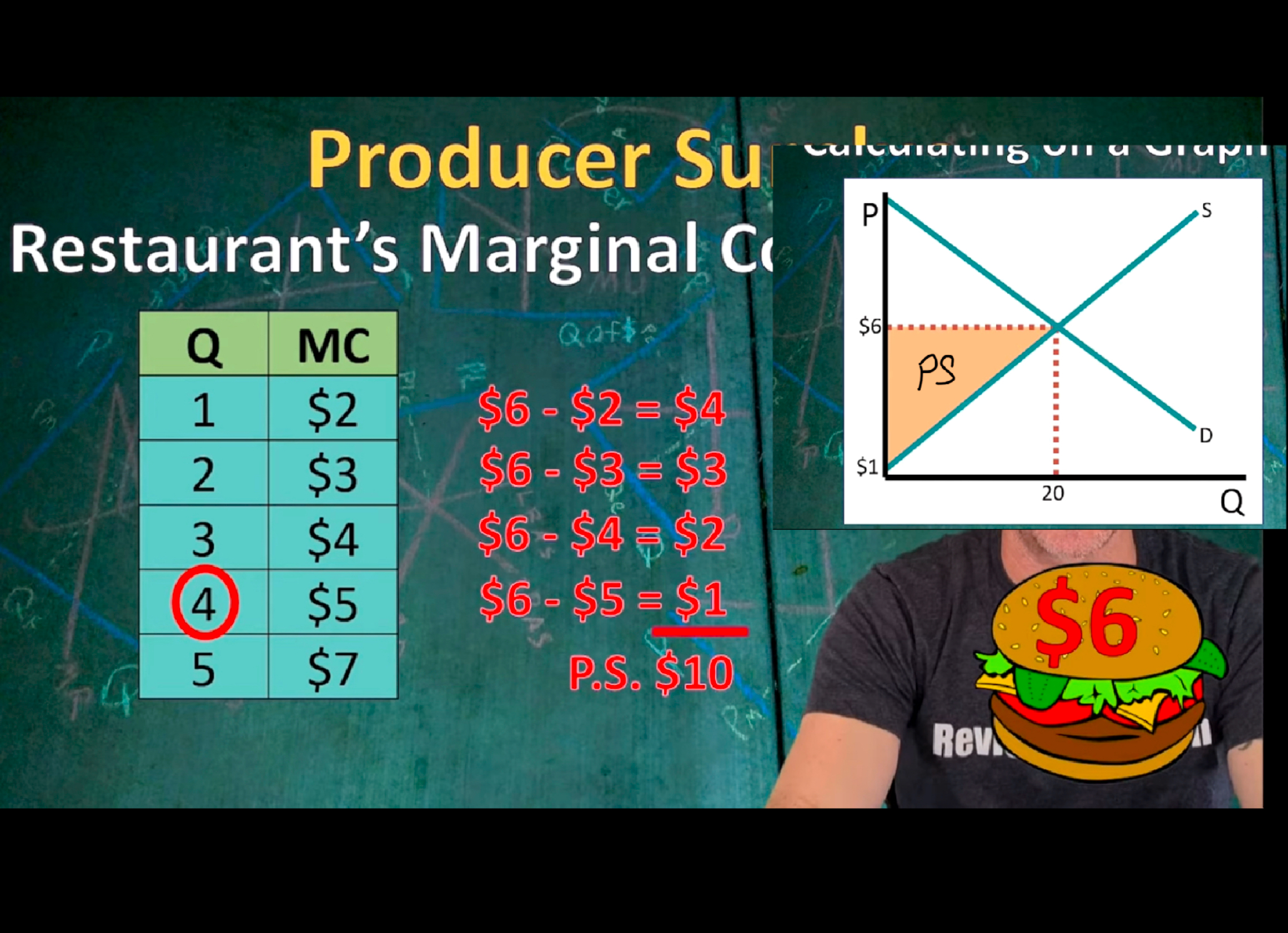
Economic surplus
Benefit gained for producers and consumers. Consumer surplus + producer surplus = economic surplus
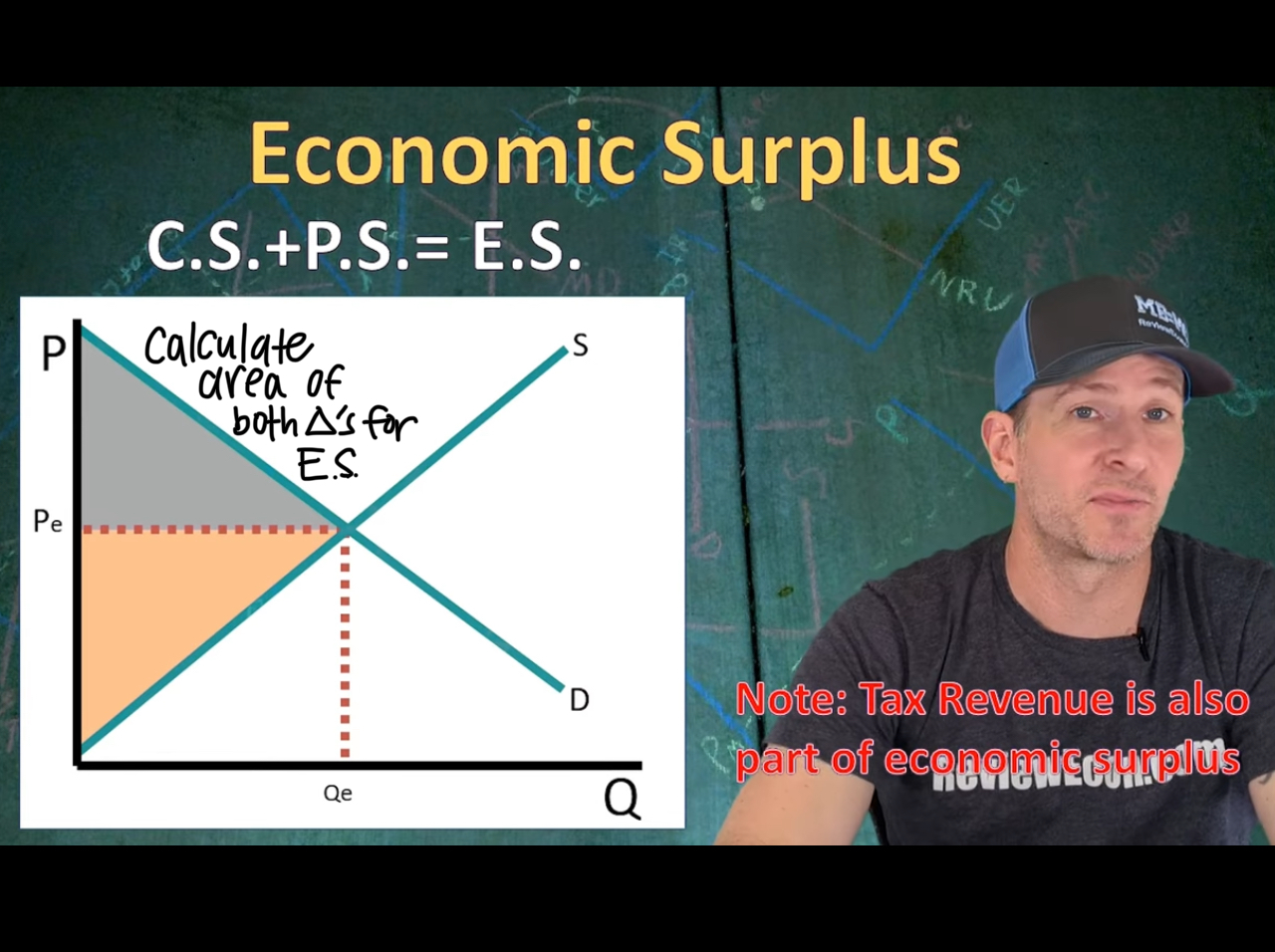
Efficiency loss/ deadweight loss
Reduction of economic surplus. It’s the area that could’ve been economic surplus if we reached equilibrium. (Also occurs with shortages)
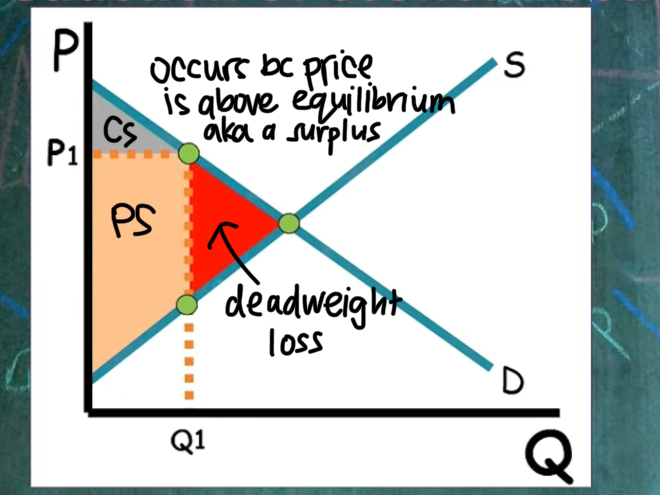
Quantity controls
The gov mandates a certain quantity to be produced. If it’s less than the equilibrium quantity, it leads to deadweight loss (same if it’s more than equilibrium)
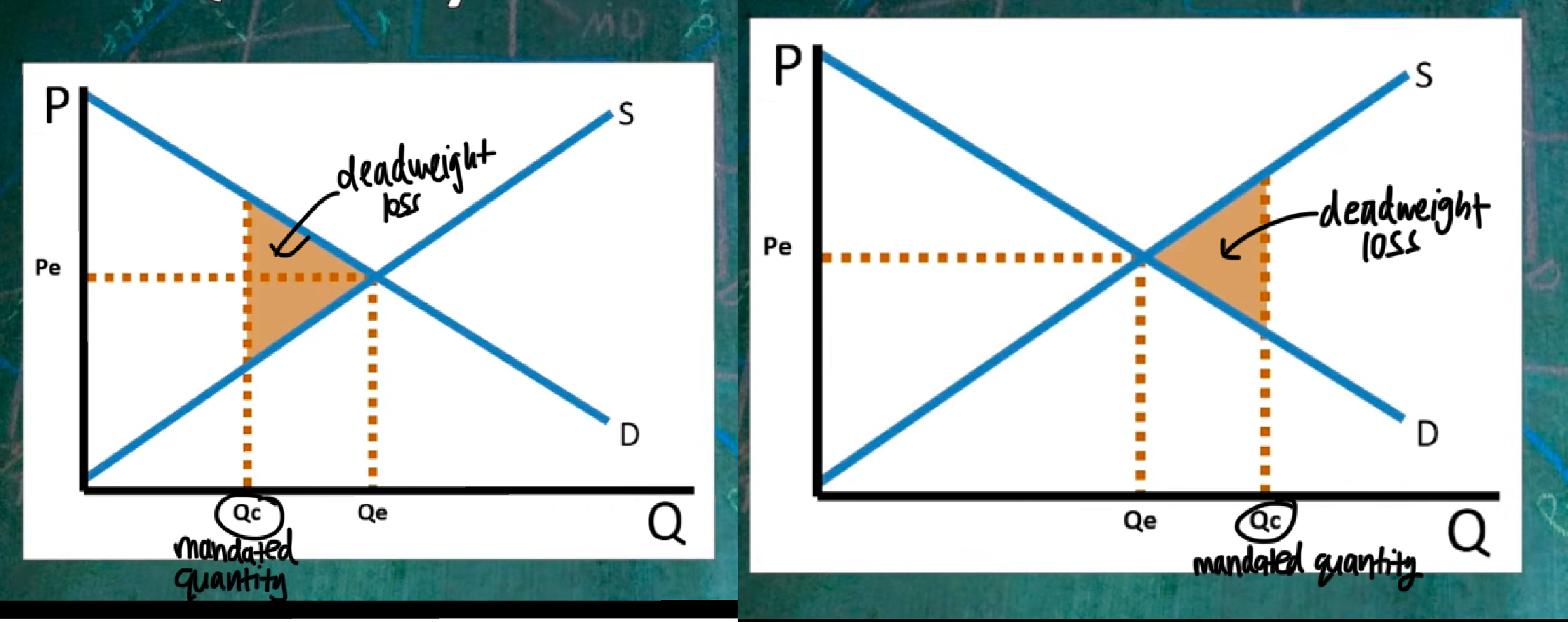
Price floor
Minimum price for a product, creates surplus. If the product is inelastic, the surplus will be smaller. A binding price floor is above equilibrium. A non-binding price floor is below, and it’s ineffective.
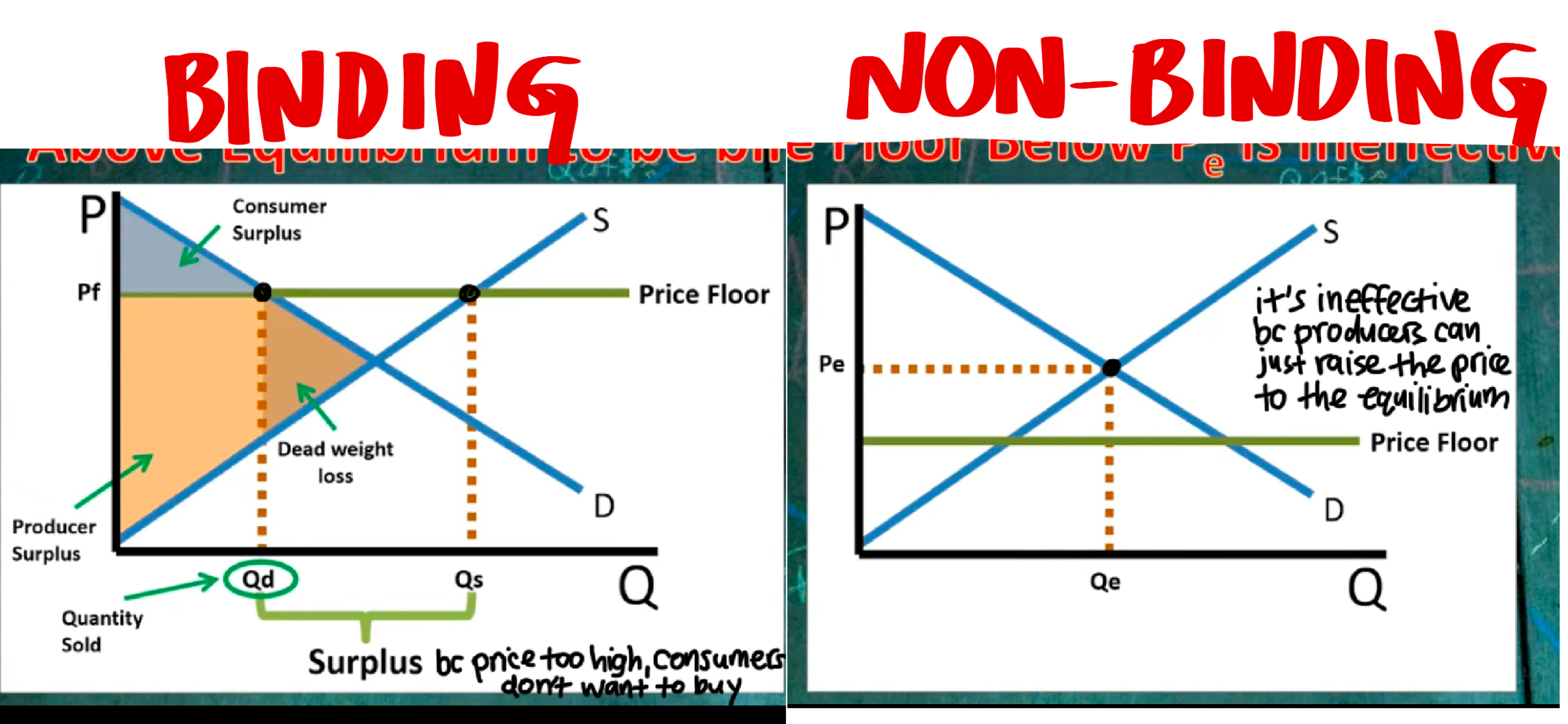
Price ceiling
Maximum price for a product

Per-unit subsidies
Gov pays producers per unit they make
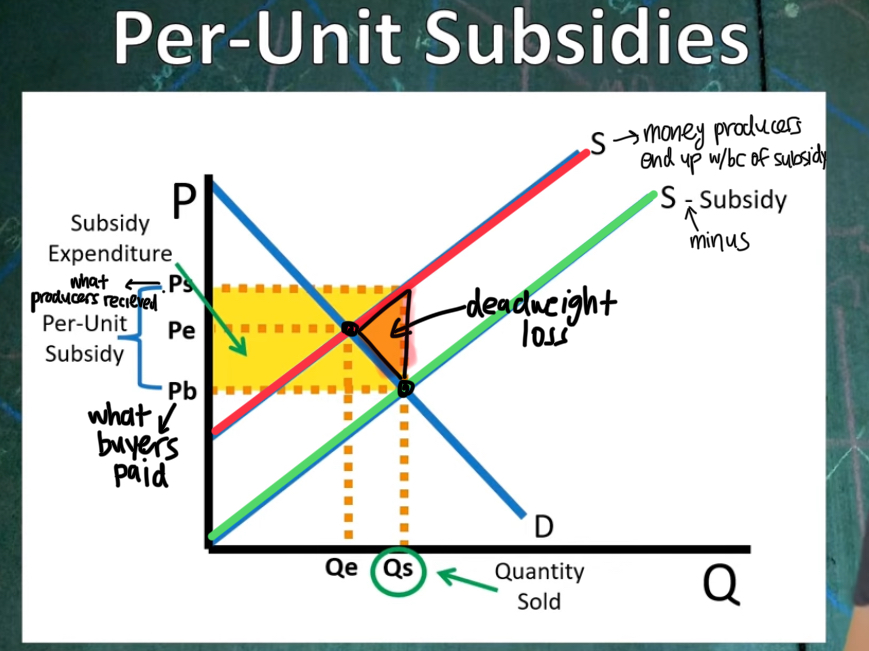
Per-unit taxes
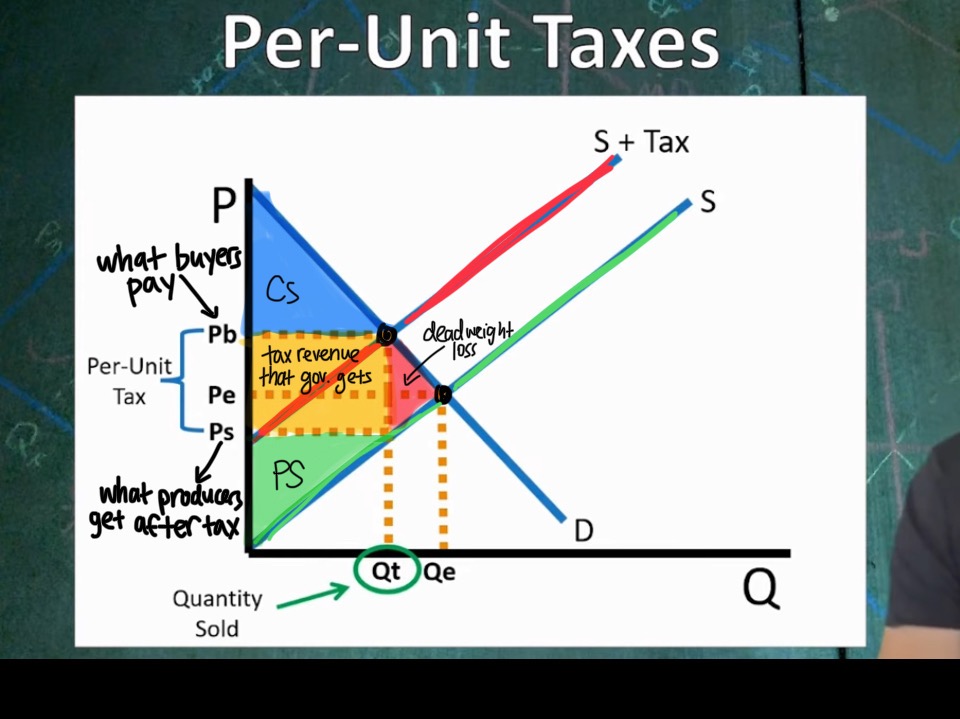
Tax incidence/tax burden
How we find out who pays the tax (consumer or producer). If one of the curves (supply or demand) is less elastic, it pays more tax
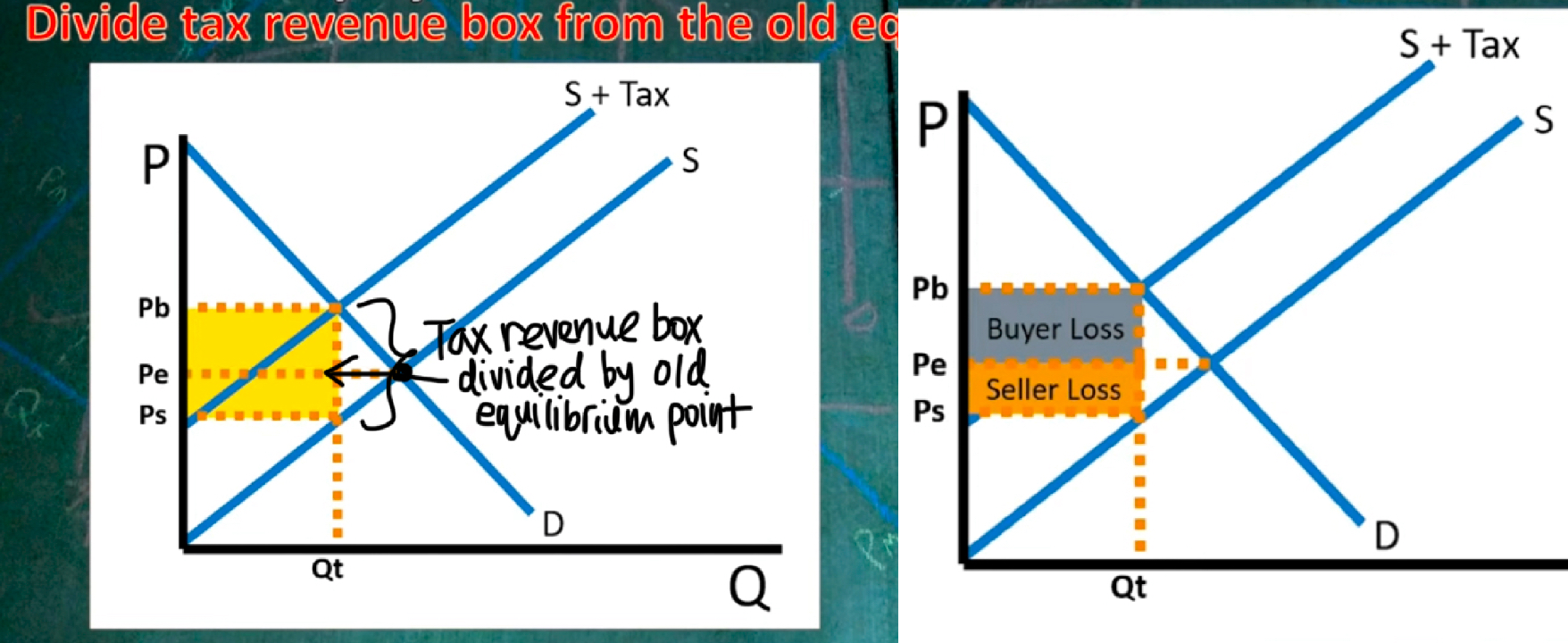
Autarky
When countries are independent and don’t trade with other countries
Low world price
Note: World trade increases economic surplus
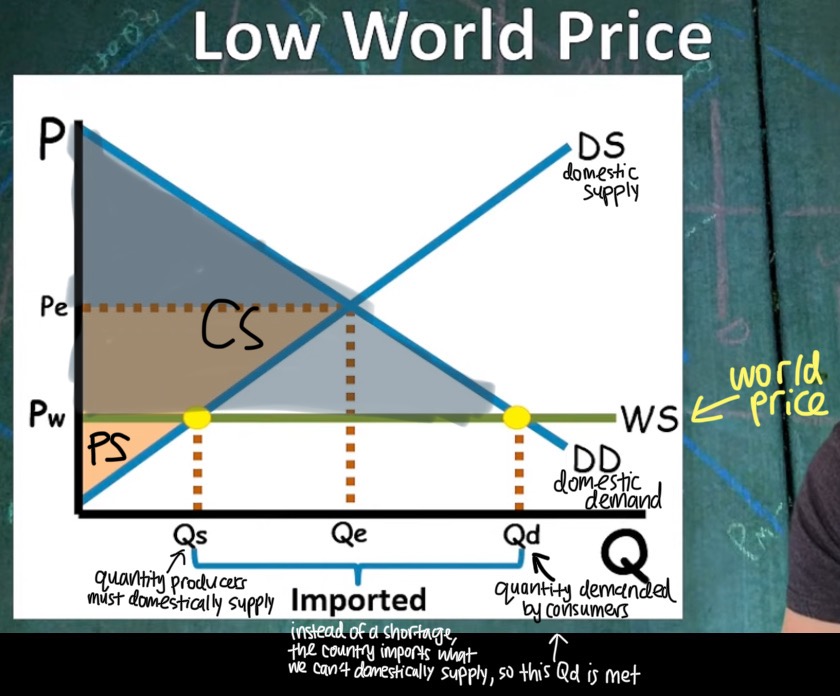
High world price
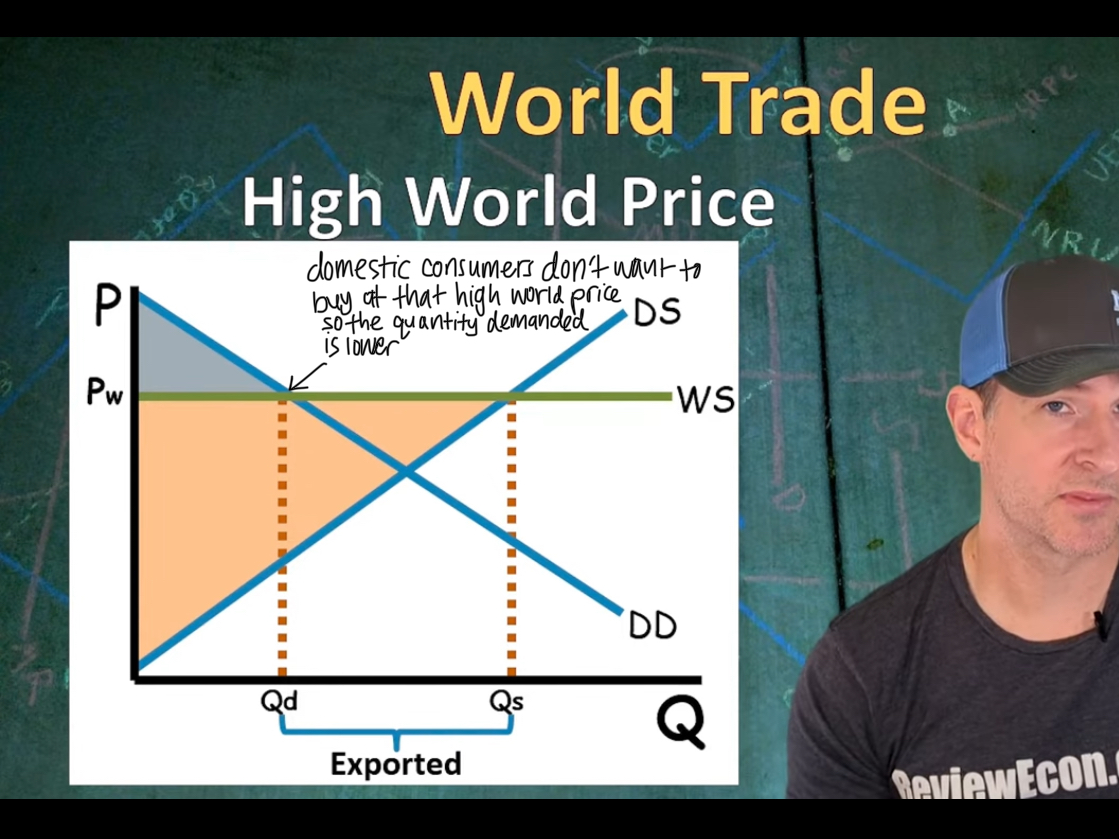
Quota
Places a limit on the amount of imported goods. It limits trade, decreases economic surplus, and creates deadweight loss
Tariff
A tax on imports. Results in higher world price. It limits trade, decreases economic surplus, and creates deadweight loss
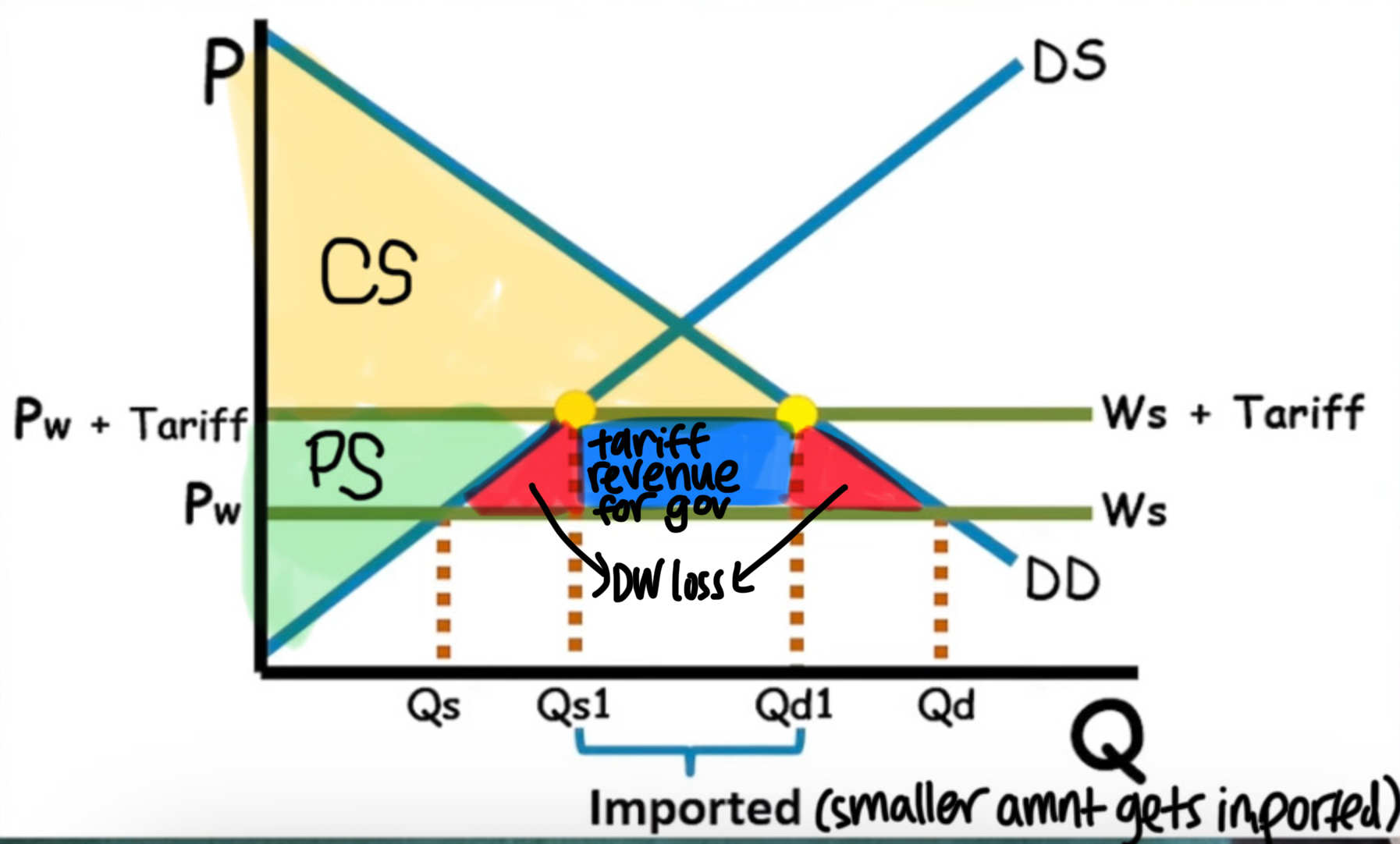
Production function
Shows the relationship between the quantity of inputs and quantity of outputs (long-run and short-run)
Short-run production function
At least one input is fixed and u can change the quantity of labor, which will change the quantity of outputs and rate of production. We have fixed amounts of physical capital, but we can increase the #of workers
Long-run production function
All inputs are variable (subject to change). We can change the rate of production and the capacity of production. We can change the amount of physical capital and #of workers in a firm
Marginal Product
Change in total product

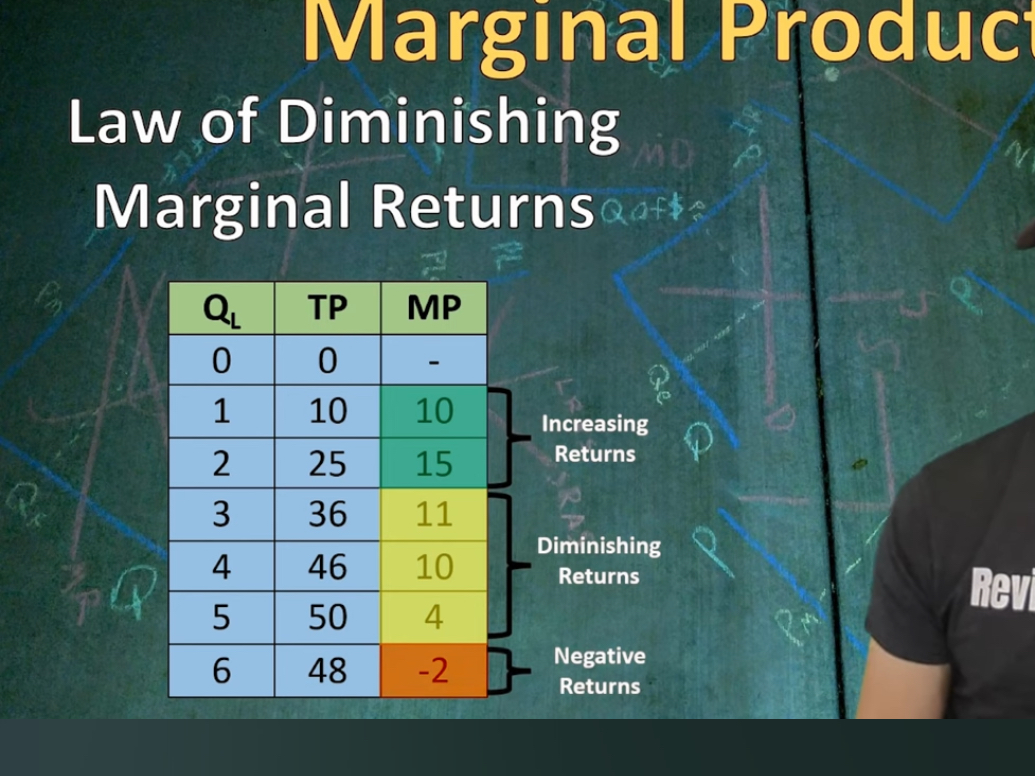
According to the Law of Diminishing Marginal Returns, at which quantity of workers does diminishing returns set in?
The 3rd worker bc that’s when the marginal product starts decreasing
Specialization
When each worker gets their own task, and they get highly skilled at their specific task. This increases the marginal product with each worker hired
Average product
Total product / quantity of workers (aka finding average)
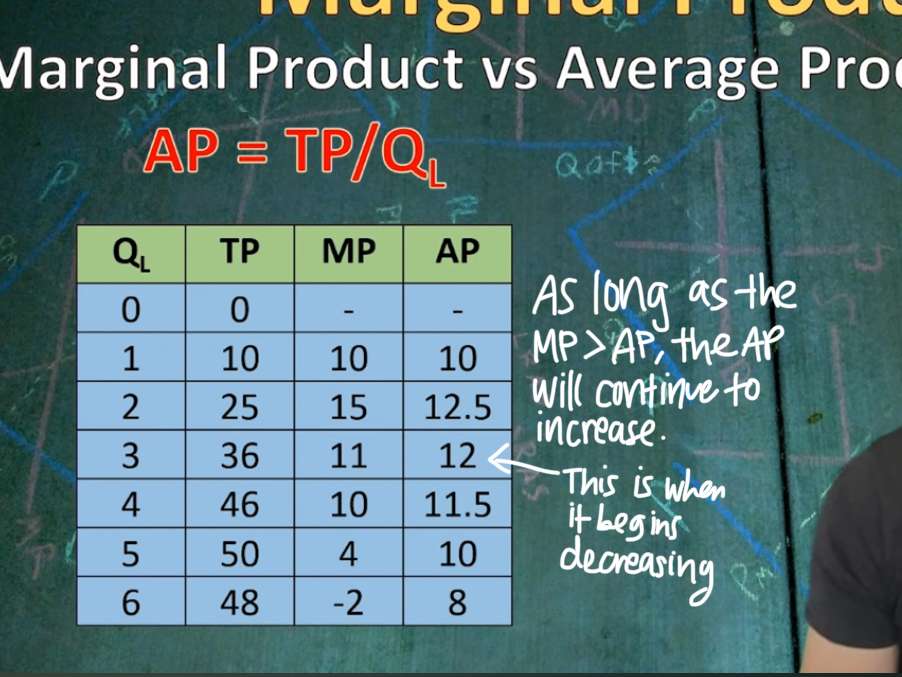
Marginal cost of labor
Wage that workers are paid/ marginal product of those workers
